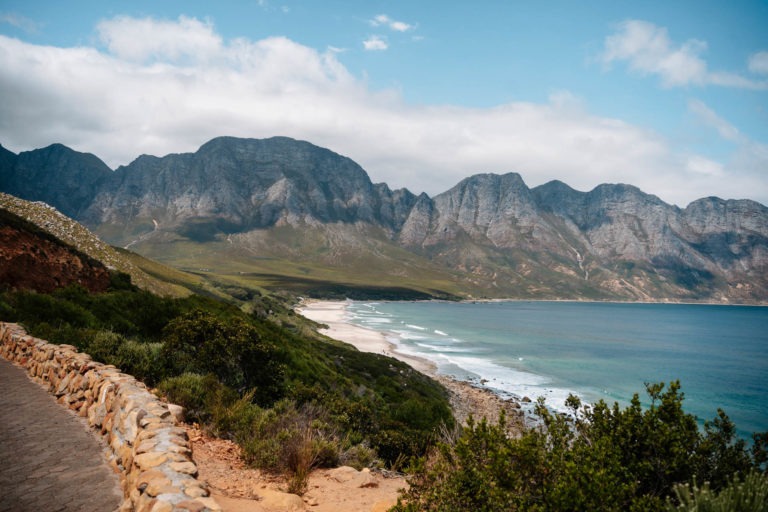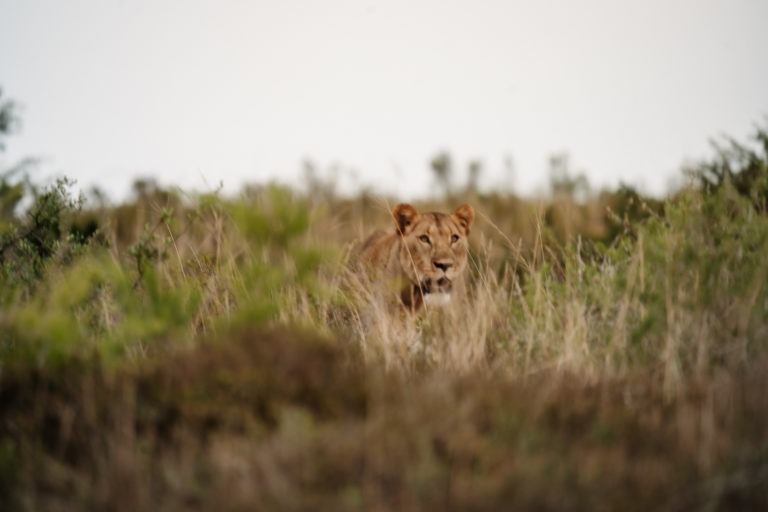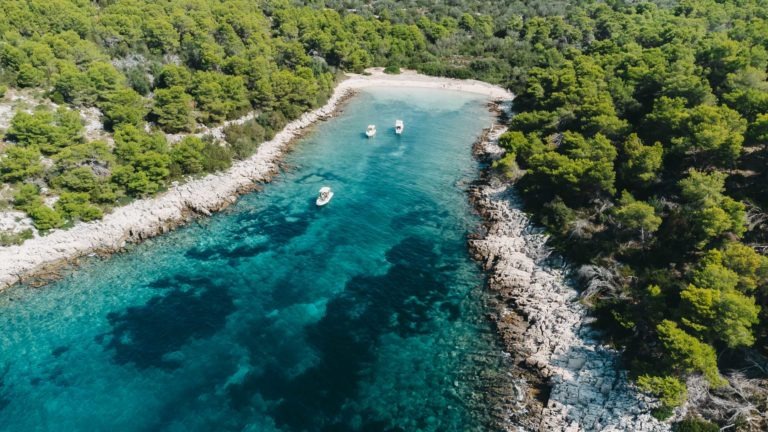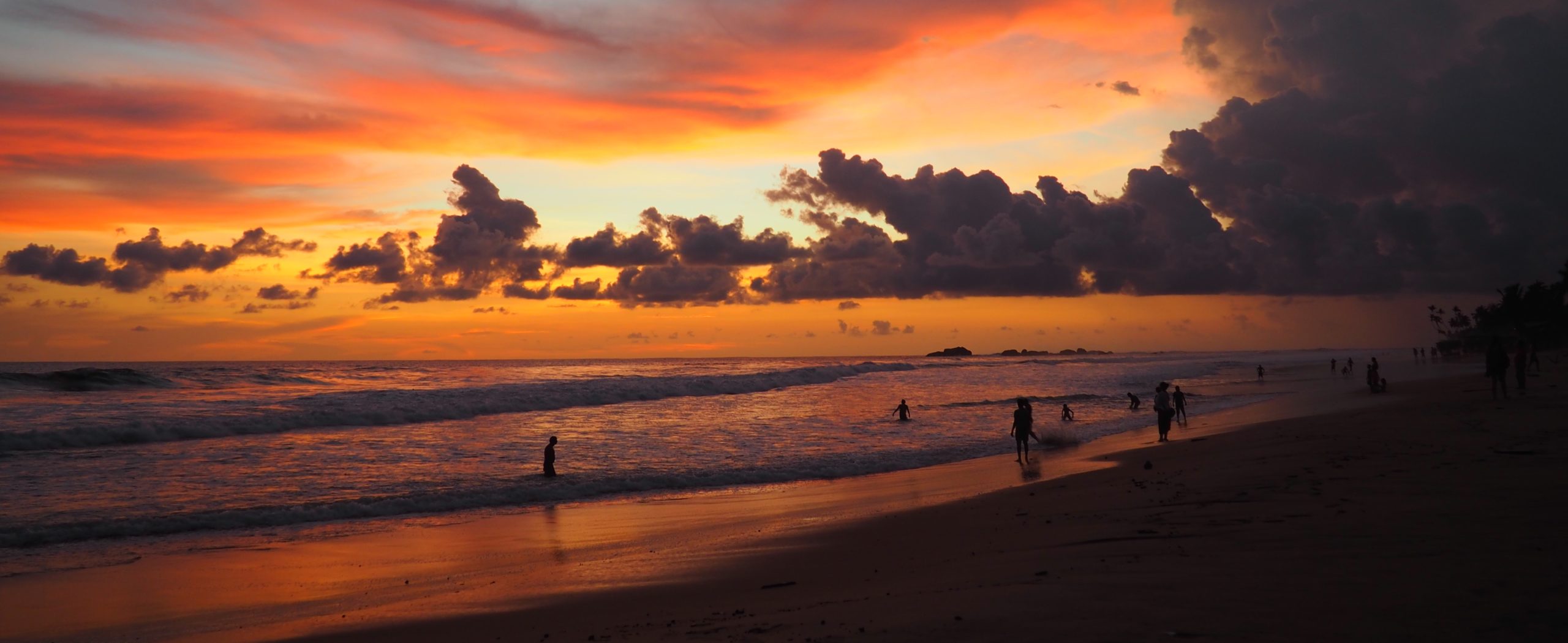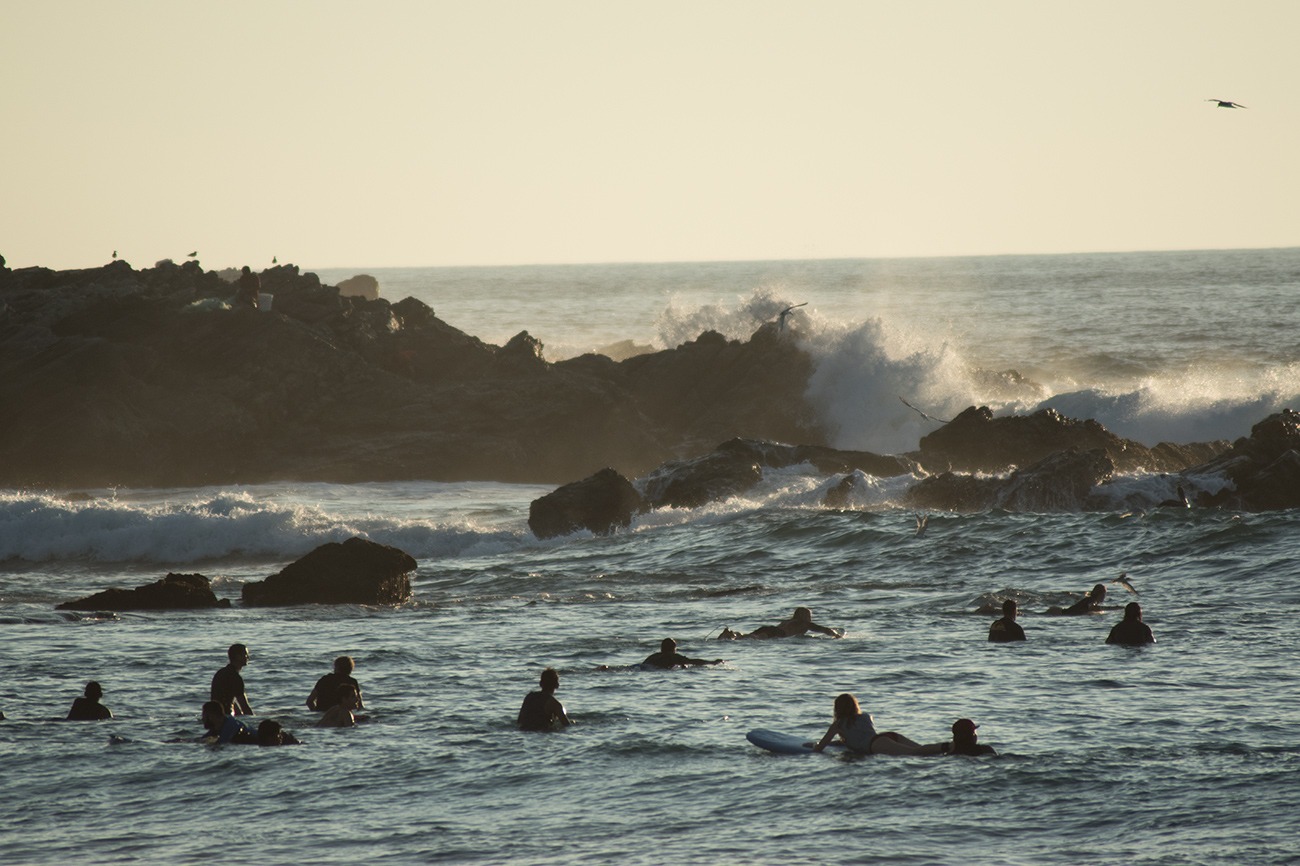The Garden Route is an absolute highlight in South Africa. It stretches over around 300 kilometers (190 miles) along the spectacular coastline of the Western and Eastern Cape.
With its endless beaches, dense forests, charming towns, and special activities like safaris and hikes, it just has everything. Whether surfing in J-Bay, a sunset safari in a game reserve, or wine tasting in Stellenbosch – the Garden Route simply makes you happy.
Good to Know: Details about the South Africa Garden Route
Where is the Garden Route located?
The South African Garden Route stretches along the breathtaking southern coast of South Africa, connecting some of the country’s most scenic regions.
It is known for its lush landscapes, picturesque coastal stretches (which sometimes lookalike New Zealand), and a wide range of outdoor activities. Along the route, you’ll find charming small towns, impressive national parks, and countless opportunities for both adventure and relaxation.
Where does the Garden Route start and end?
The Garden Route officially starts in Mossel Bay and follows the coastline all the way to Storms River.
But many (including us) kick off their journey in Cape Town, as the stretch from there to Port Elizabeth is absolutely worth it.
Some highlights that should be on every itinerary:
✔ Cape Town with its iconic Table Mountain
✔ Wine tasting in Stellenbosch
✔ Hermanus (including whale watching)
✔ Knysna and its Heads
✔ Hiking in Tsitsikamma National Park & Plettenberg Bay
✔ Surfing in Jeffrey’s Bay
✔ Big 5 safari in a game reserve
How much time should you plan for the Garden Route?
At least 10 days are ideal to experience the highlights without stress. If you have more time, you can extend your trip to 14 days or longer, allowing you to stay longer in places you love. Less time would mean you would need to skip a lot.
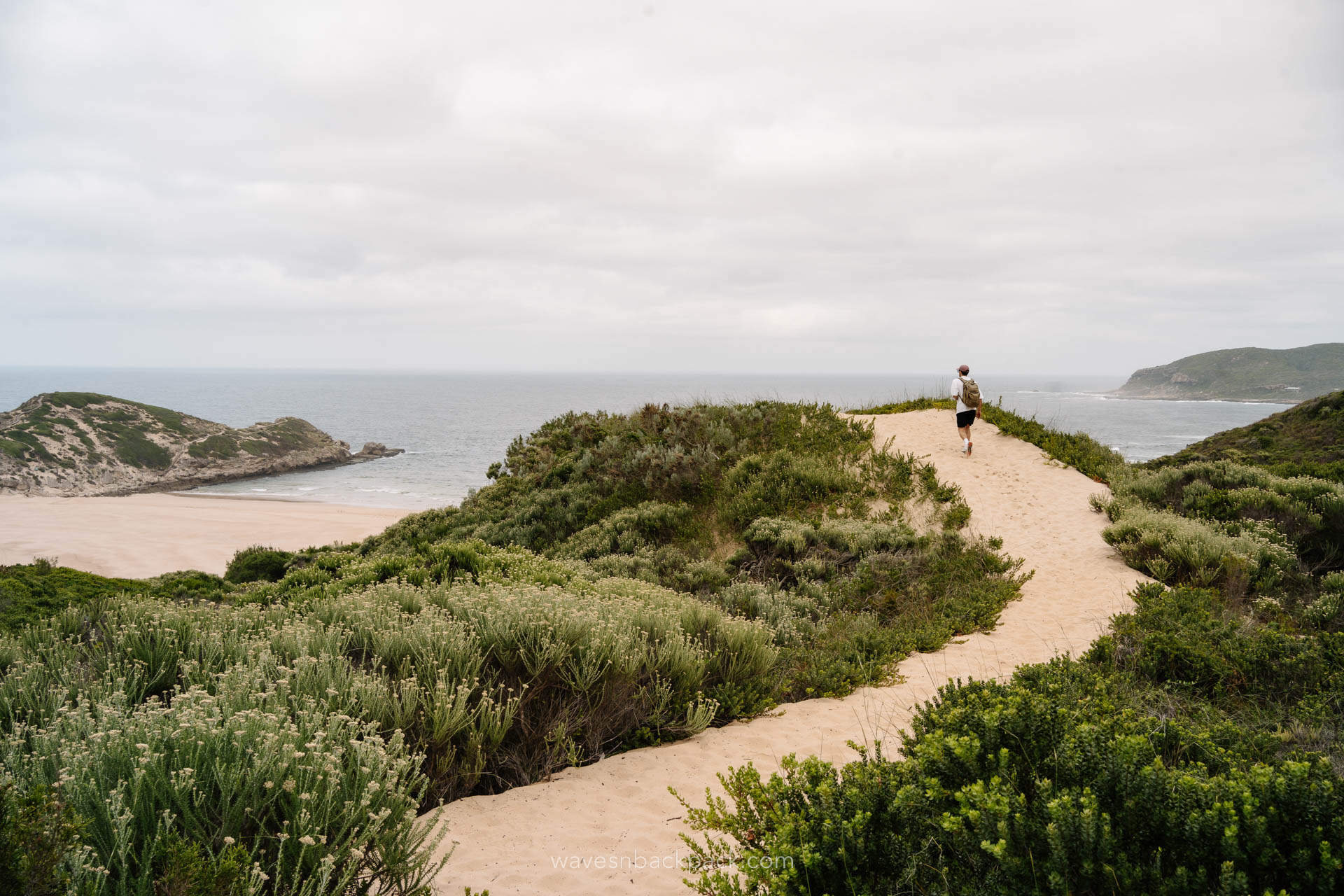
In general, South Africa is so diverse that we can confidently say you could easily spend four weeks on the Garden Route without ever getting bored.
Which stops are worth it?
Here’s our list of the absolute must-see spots along the Garden Route:
Our Highlights on the South Africa Garden Route
1. Cape Town & Surroundings
Start your journey in Cape Town – a city that not only boasts the legendary Table Mountain but also won us over with its unbelievably good food.

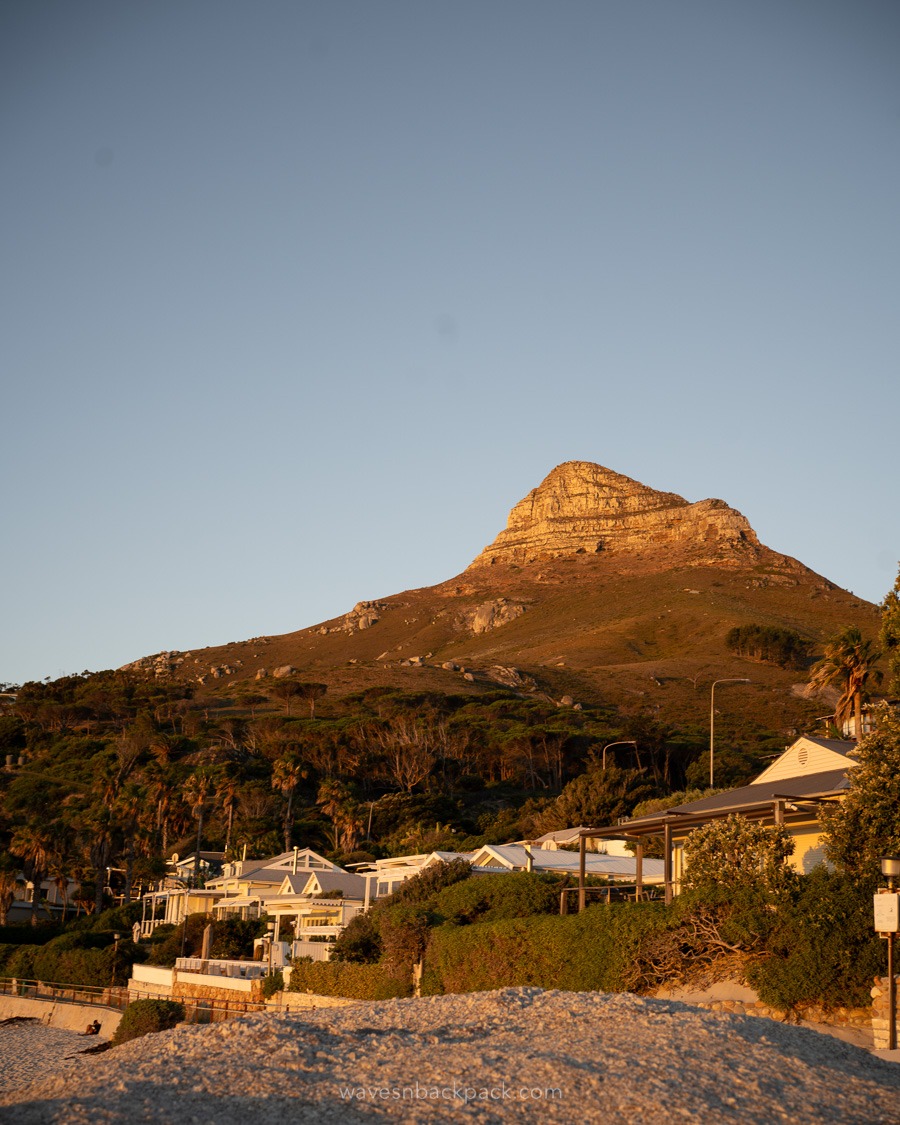
Kick off your day with an unforgettable sunrise hike up Lion’s Head – the view over the city and ocean is simply unmatched.
Later, make a stop at the Oranjezicht City Farm Market, where you can sample local delicacies, fresh produce, and tasty snacks in the coziest, hip atmosphere.
As the day winds down, the golden light is just too beautiful to miss – soak in the sunset at Camps Bay or Clifton Beach.
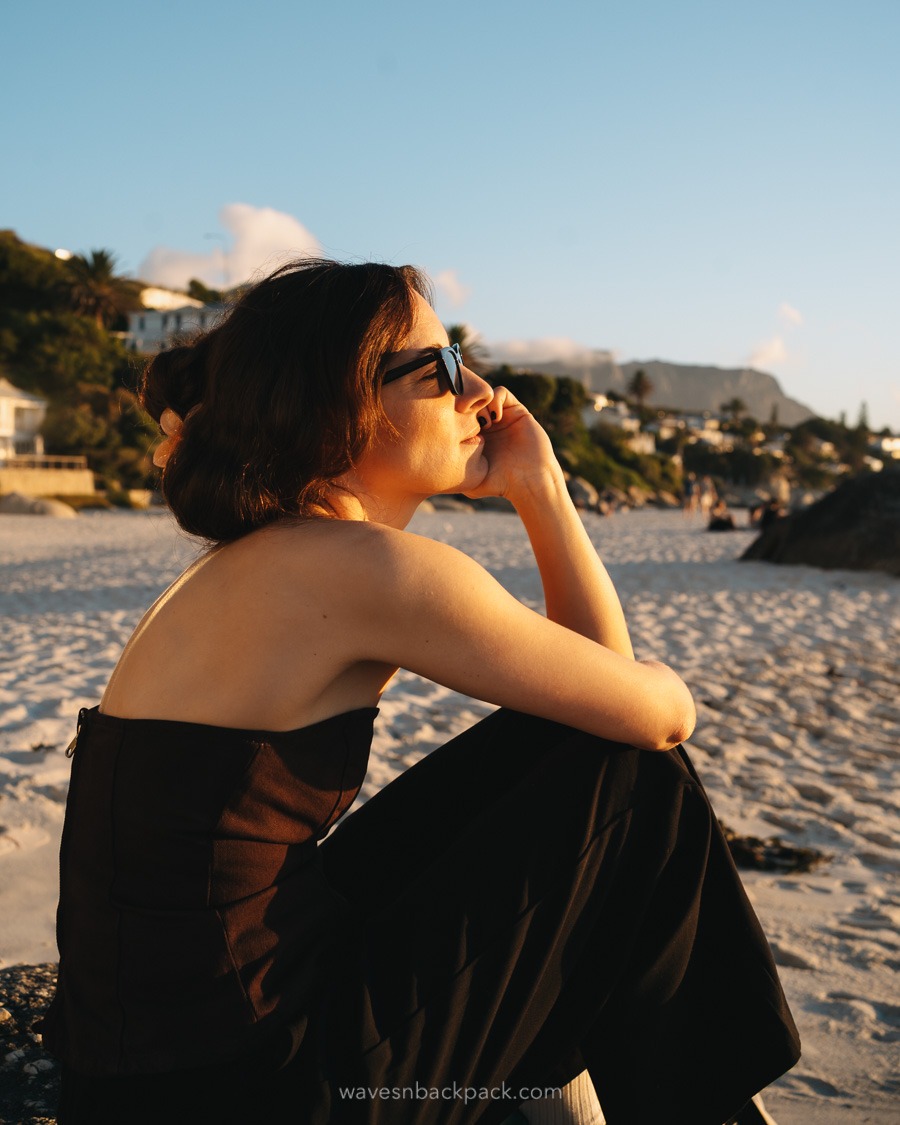
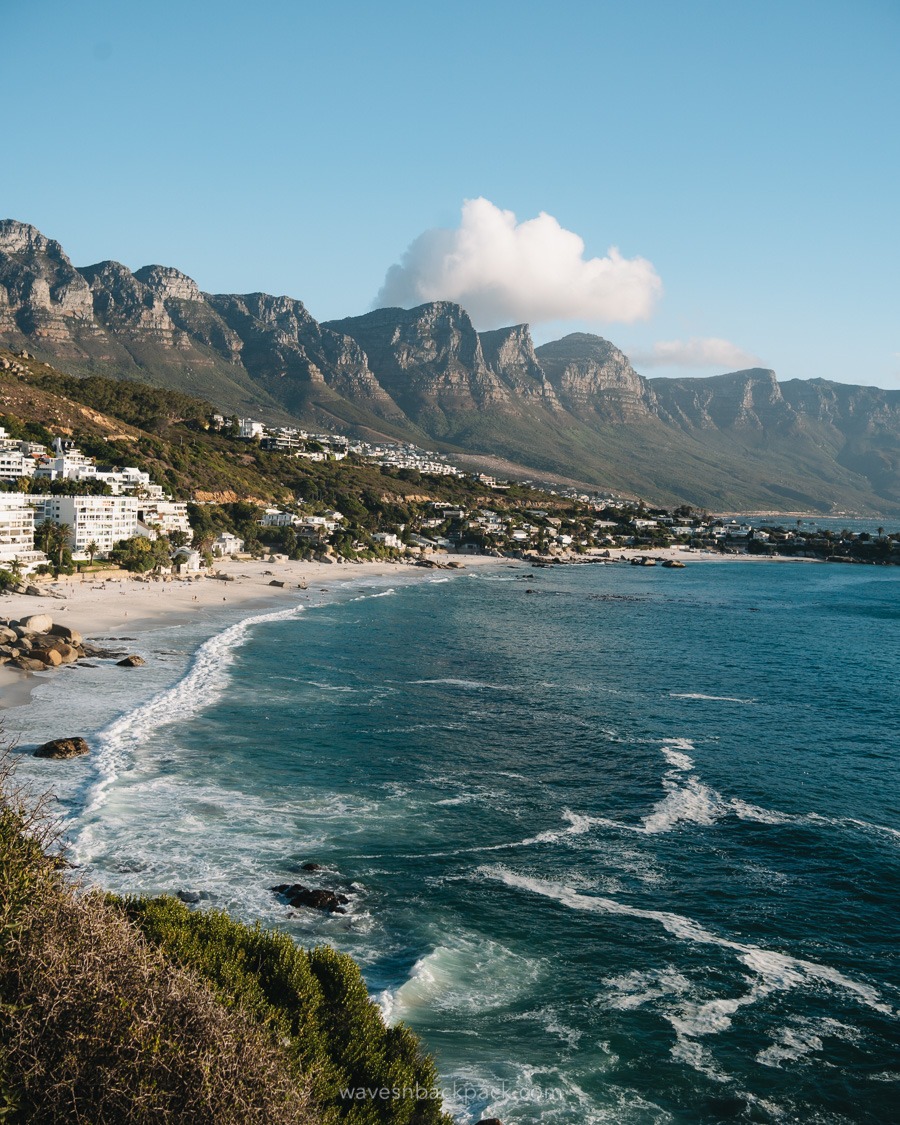
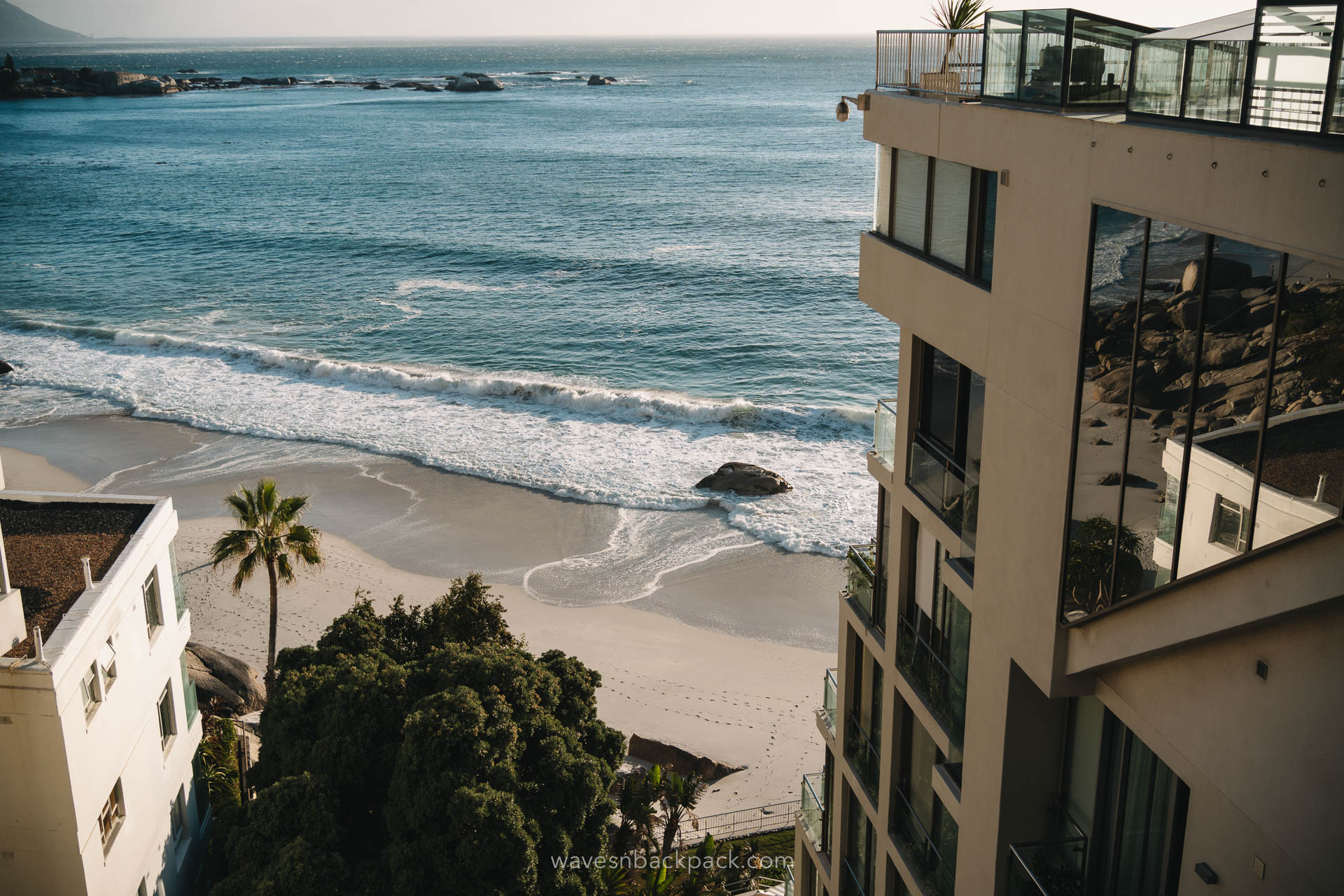
Cape Town is full of contrasts and offers so much to explore – we even caught ourselves struggling to choose from all the amazing options!
Our Top 3 in Cape Town
- Spot | Sunrise on Lion’s Head
- Accommodation | We stayed here, but in hindsight, we found it overpriced for what it offered.
- Food | Truffle Ravioli at La Trattoria “The Cousins”, @thecousinsrestaurant
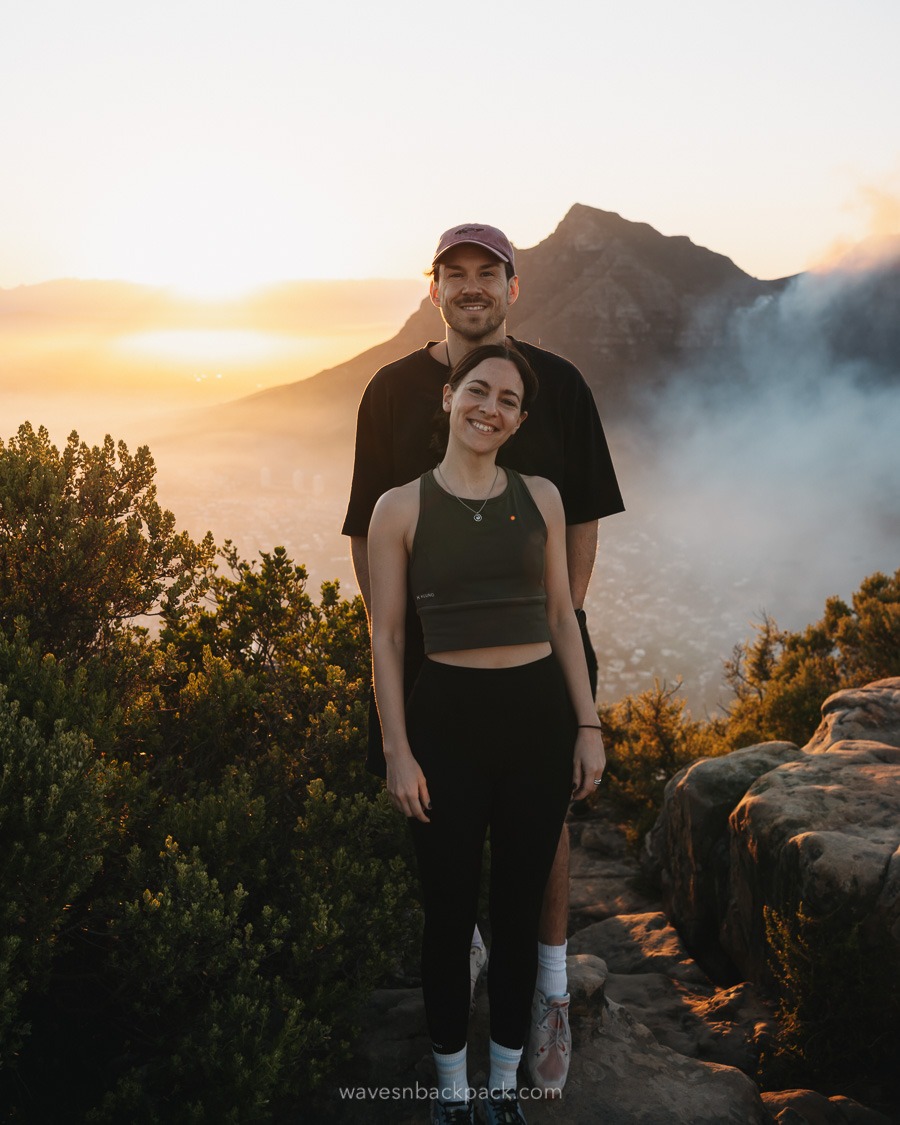
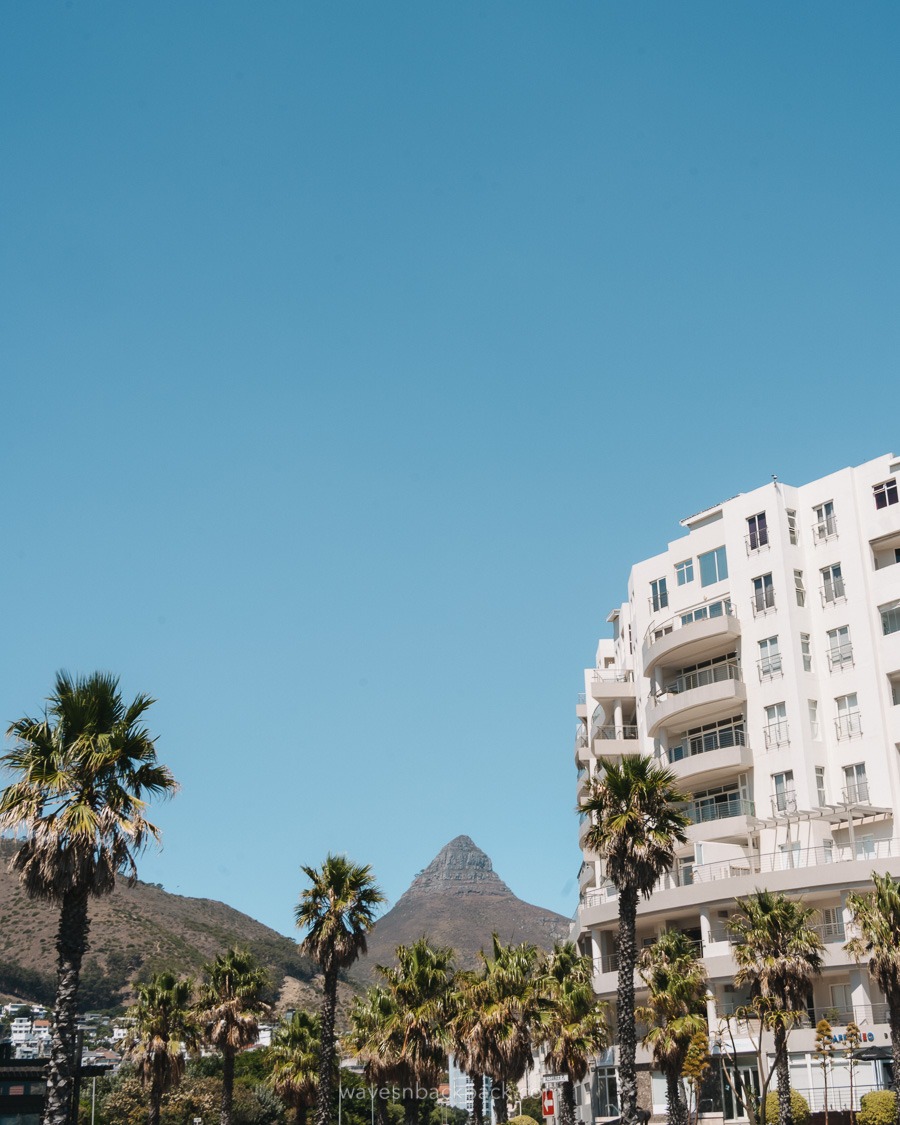
We did this sunrise tour – highly recommended:
➳ Find all accommodations in Cape Town here
2. Stellenbosch
From Cape Town to Stellenbosch
From Cape Town to Stellenbosch, it’s just a short drive of about 50 kilometers that takes you into a completely different world.
While Cape Town offers a bit of everything, Stellenbosch, with its historic streets, elegant wineries, and rolling landscapes, puts you in a pretty relaxed mode. The drive takes around 45 minutes and leads through green vineyards, building anticipation for the region.
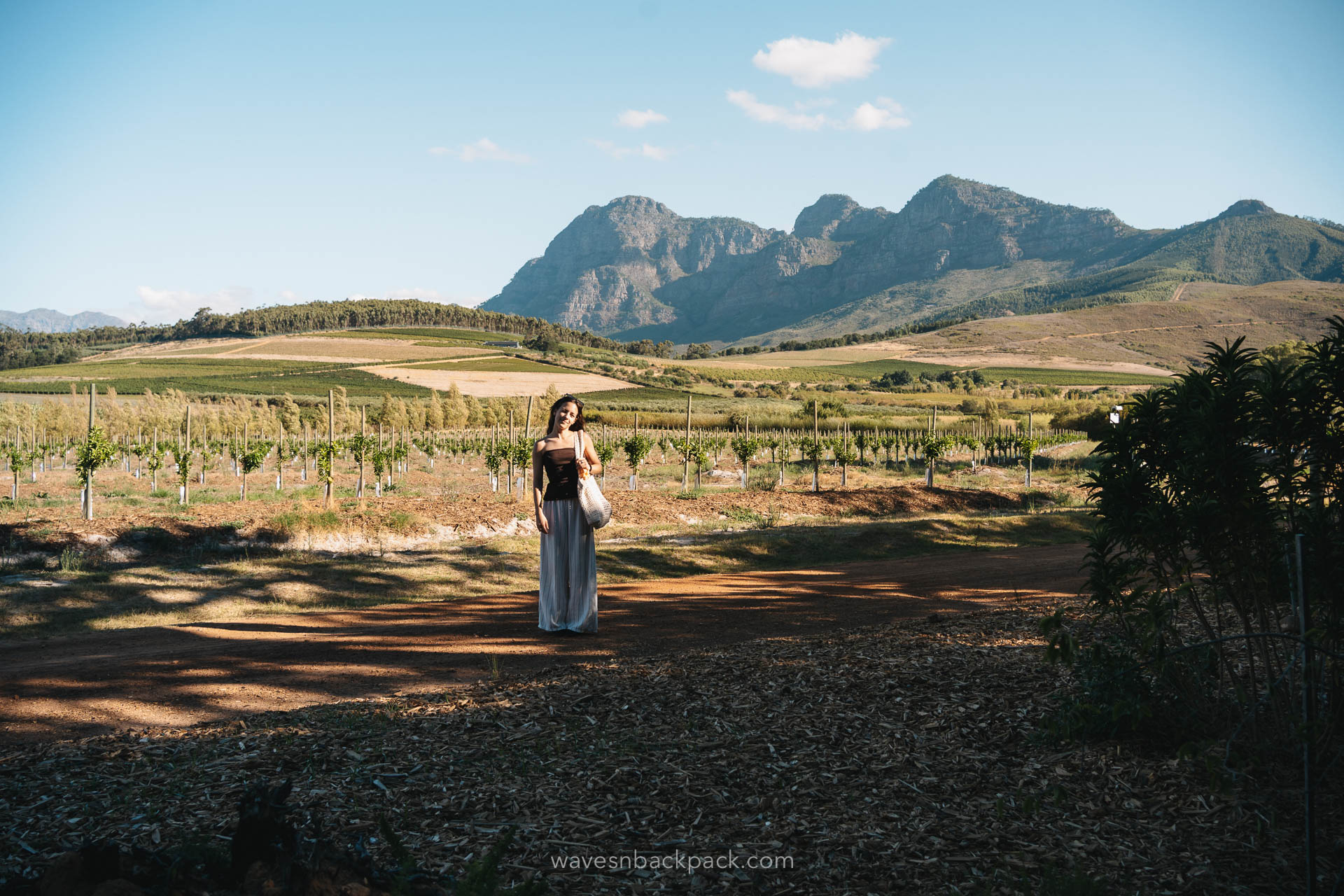
But because you simply can’t – and shouldn’t – turn a blind eye, reality looks also like this: Just five minutes from the lush vineyards, one township follows another. A parallel world – and above all, the reality for many locals. This fact should never be ignored during your trip, and for us personally, it was something we were constantly aware of.
Stellenbosch – Wine, Wine, Wine
Stellenbosch is the heart of South Africa’s wine region, offering historic charm, small alleys, and a vibrant arts and culture scene. The small town is lined with Cape Dutch buildings, cozy cafés, and a laid-back atmosphere, perfect for simply wandering around. If you like wine, this is the place to be.
Our Top 3 in Stellenbosch
- Location | Garden at Babylonstoren Wine Estate, @babylonstoren
- Unterkunft | AirBnB
- Essen | Lunch + Red Wine at Rust en Vrede Wine Estate, @rustenvrede1694
➳ Find all accommodations in Stellenbosch here
Picnic at Warwick Wine Estate
We booked a picnic at Warwick Wine Estate, where you can relax under sun umbrellas by the lake on a large lawn and enjoy a beautifully curated picnic (great veggie options) with both warm and cold dishes. And of course, you can sip on a glass (or two) of their homegrown wines.

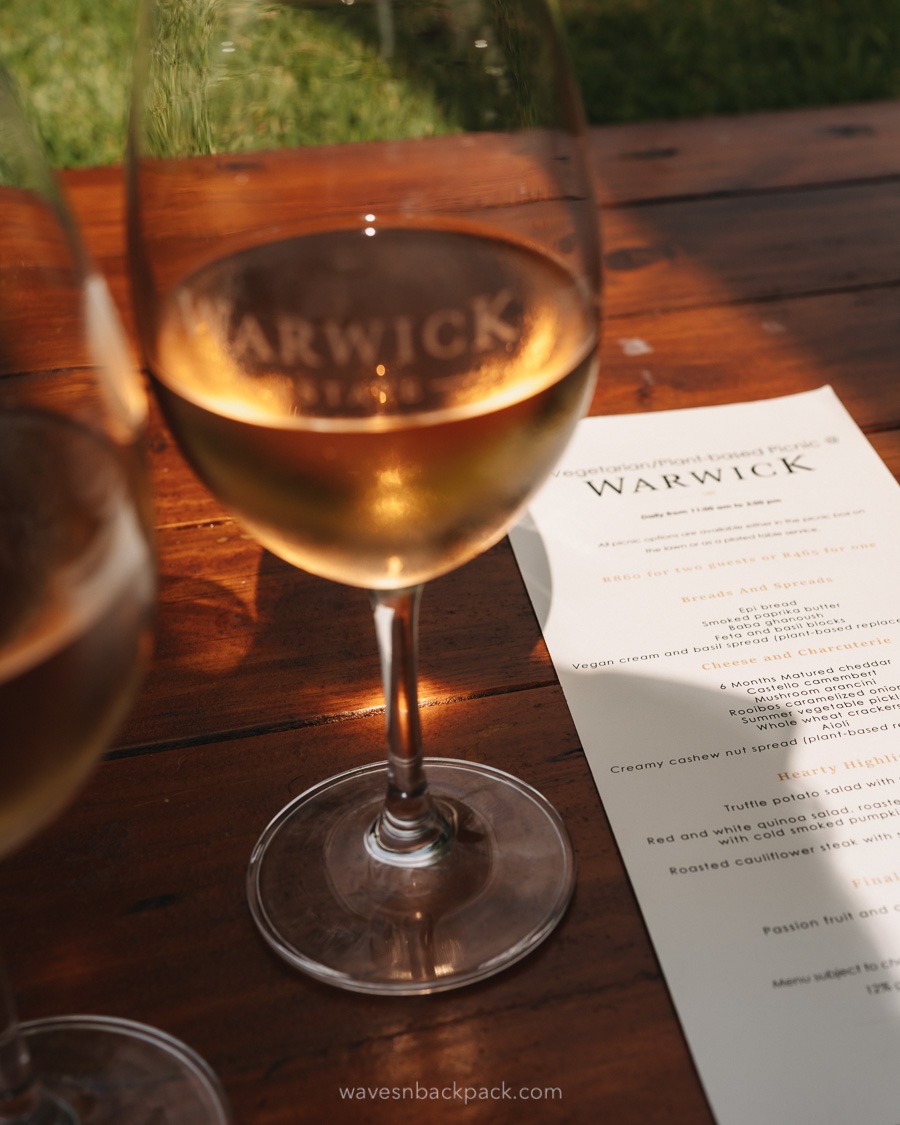

Lunch at Rust en Vrede Wine Estate
For the best steak, we highly recommend lunch at Rust en Vrede Wine Estate, known for its excellent red wines and stylish atmosphere. Lunch is served from 12 to 3 PM, and we really recommend arriving just before 12 to grab a table.

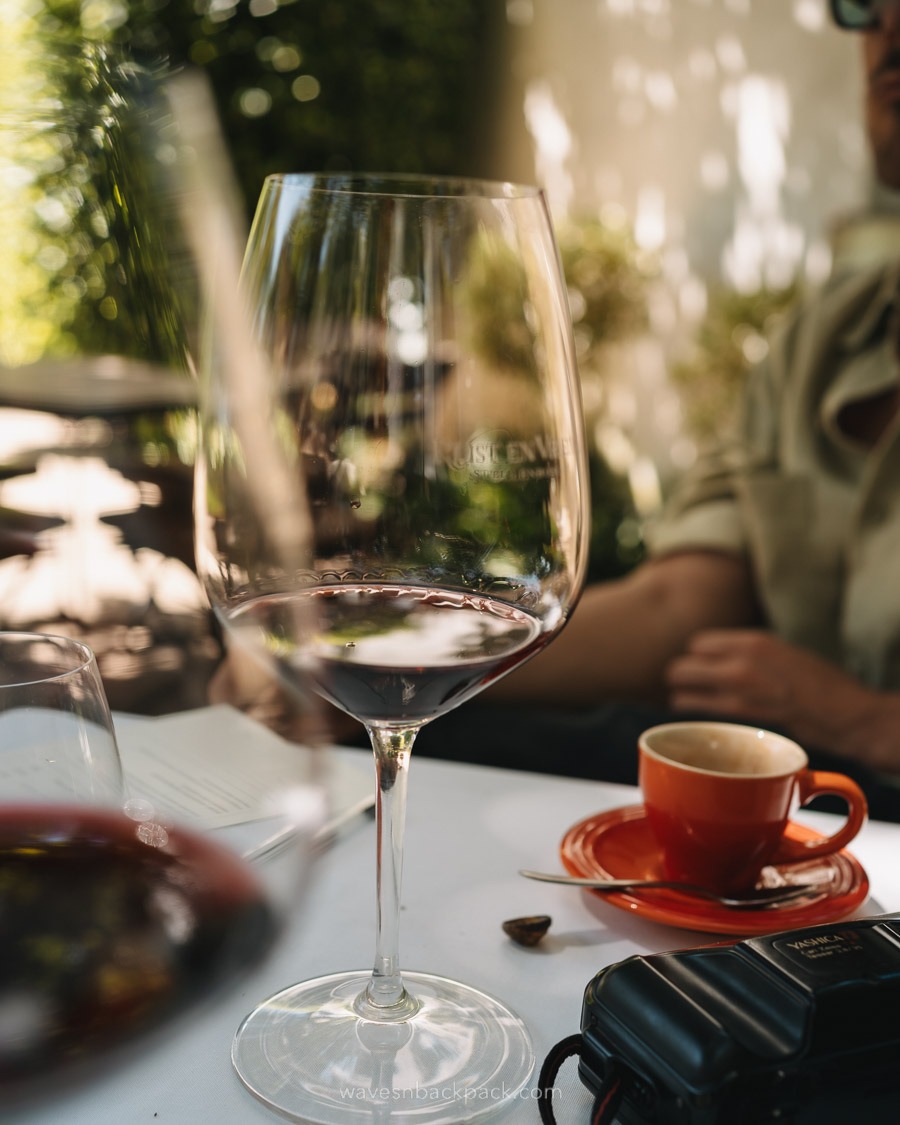
Babylonstoren with Its Lush Garden
Another highlight for us was Babylonstoren Wine Estate. But don’t picture just any winery – we’re talking about a massive estate with a local shop, free-roaming animals in pastures, and a huge garden where you can wander between herbs and vegetables. Easy to get lost and spend a couple of hours. Great for kids also!
This winery is highly recommended everywhere – and for a good reason!
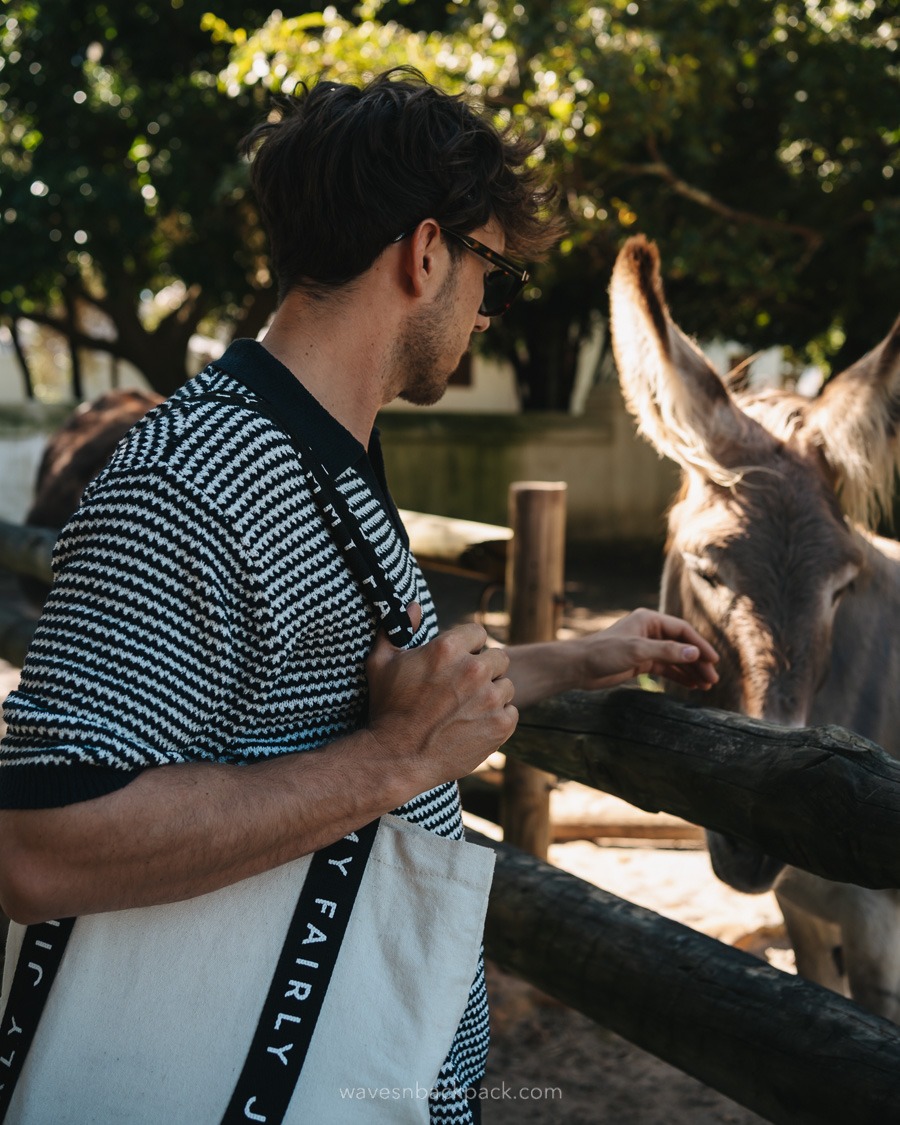
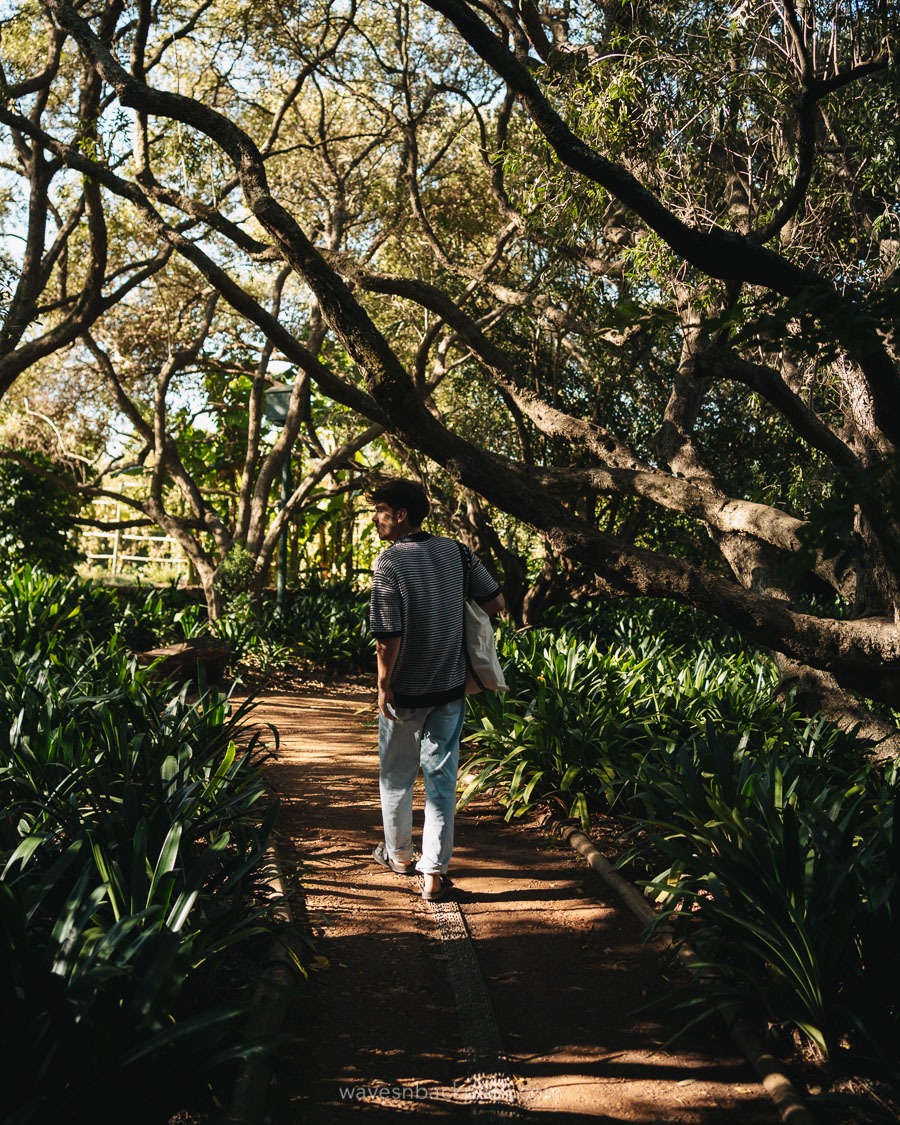
3. Betty’s Bay
From Stellenbosch to Betty’s Bay
The drive from Stellenbosch to Betty’s Bay takes you through a stunningly diverse landscape and lasts about an hour. The route winds through the Hottentots Holland Mountains and follows the coastal road R44, considered one of South Africa’s most scenic panoramic routes.
You can make stops along the way to soak in the breathtaking views of the ocean and mountains (e.g., at Kogel Baai Beach).
Betty’s Bay – The Alternative to Boulders Beach
Less crowded than Boulders Beach, but the penguins here are just as cute! At the Stony Point Penguin Colony in Betty’s Bay, you can observe African penguins up close without the heavy tourist traffic of Boulders Beach on the Cape Peninsula. A wooden boardwalk takes you through the protected area while these little fellas waddle around undisturbed or dive into the sea.
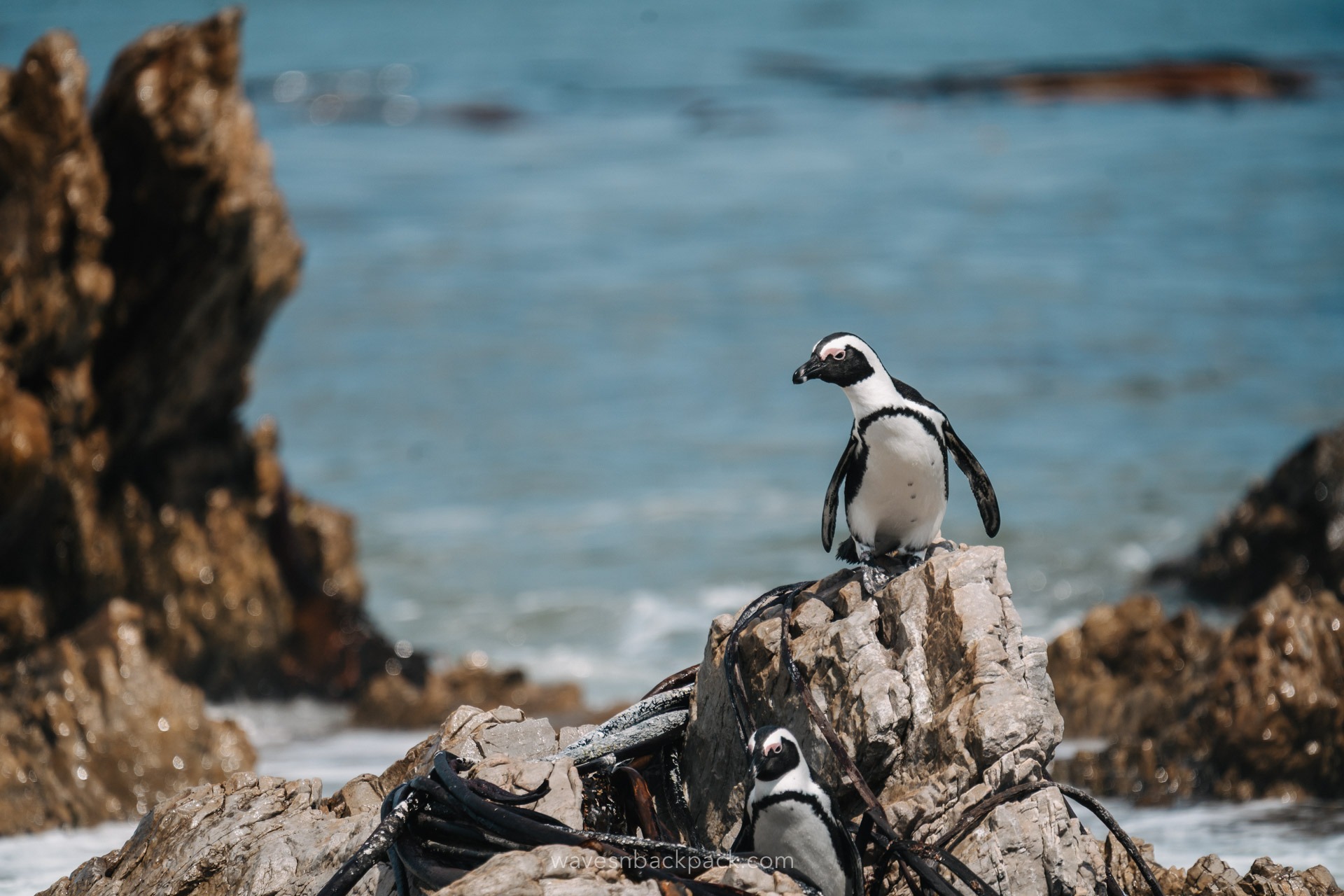
Parking is usually hassle-free, with a small lot right at the entrance of the penguin colony. If it’s full, you can easily park along the street.
Betty’s Bay itself is a quiet coastal village with a laid-back atmosphere—perfect for a short break before continuing your journey.
- Cost | 30 ZAR (approx. 1,50 EUR) pro Person
- Opening Hours | 8 am – 4:30 pm

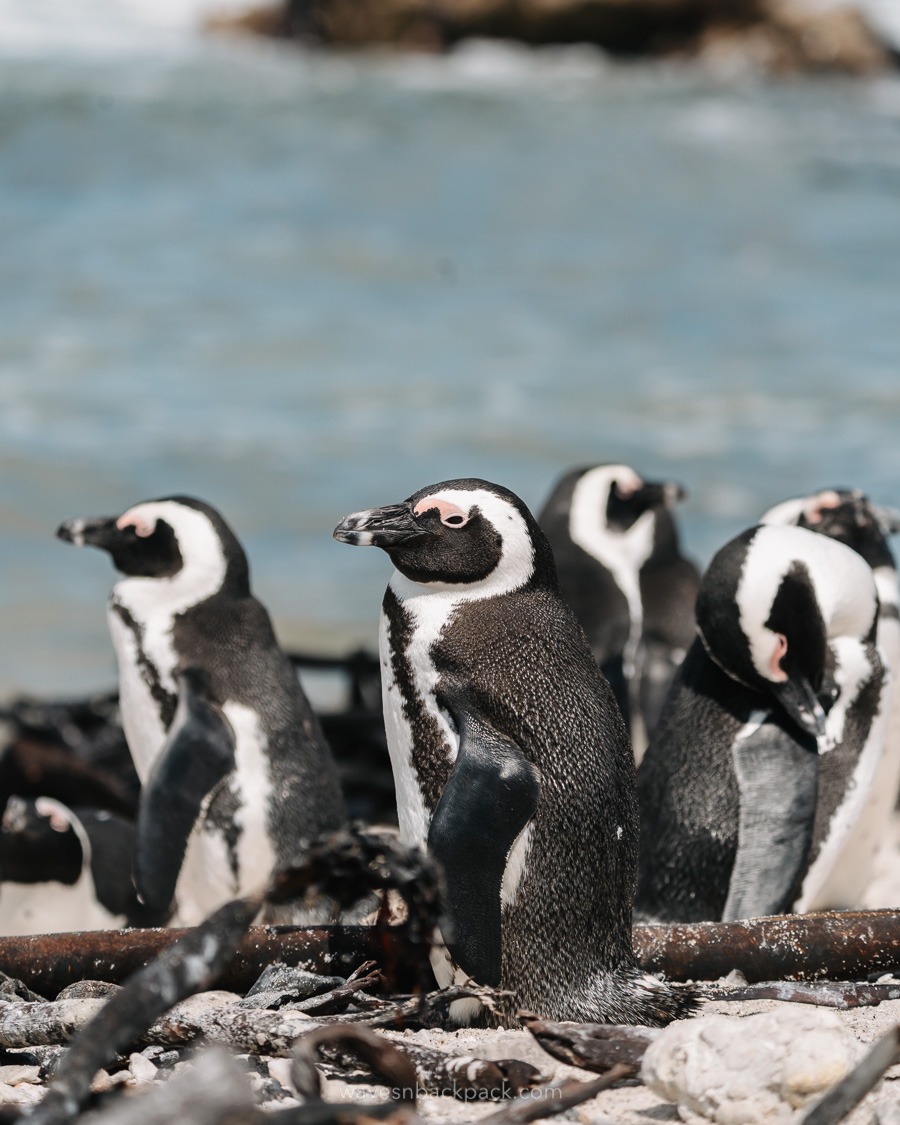
➳ Find all accommodation in Betty’s Bay here
4. Hermanus
From Betty’s Bay to Hermanus
The route from Betty’s Bay to Hermanus continues along the scenic coastal road R44 and takes about 45 minutes. The drive follows the ocean and rugged cliffs, offering breathtaking views.
Hermanus – Whale Watching & Cliff Path Hiking Trail
Hermanus is a small coastal town that has established itself as one of the best whale-watching destinations in the world. Every year, between June and November, hundreds of southern right whales migrate along the coast and can often be spotted directly from land.
The whale season runs from June to November, with its peak during the high season in September and October, when the right whales give birth to their calves here.
One of the best ways to watch whales from land is the Cliff Path Hiking Trail. This 12-kilometer trail runs along the rocky coastline, and with a bit of luck and a pair of binoculars, you can spot whales, dolphins, and seals up close.
The trail is well-maintained, easy to walk, and freely accessible.
Our Top 3 in Hermanus | Stanford
- Place + Accommodation + Food | simply the best accommodation in Stanford
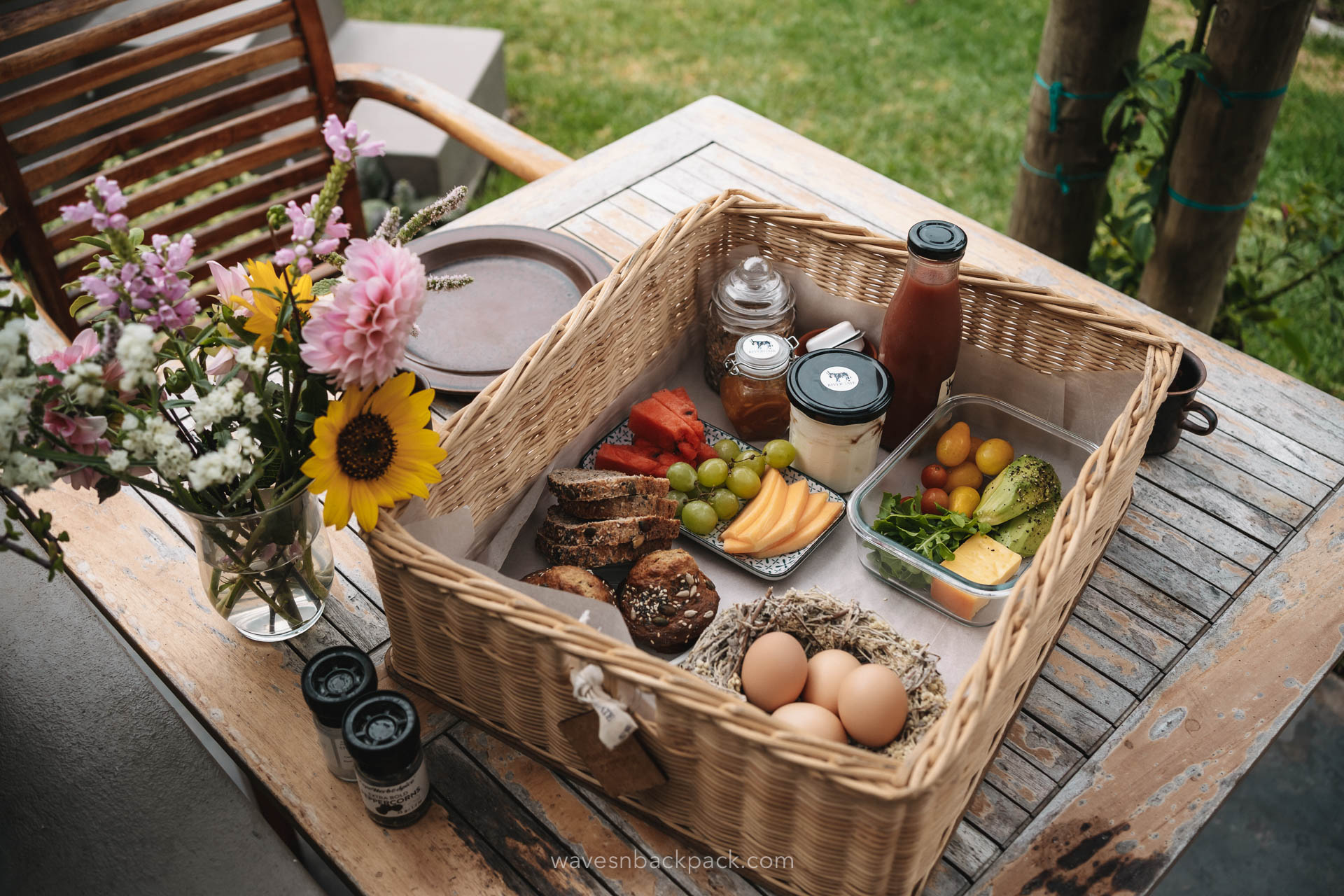

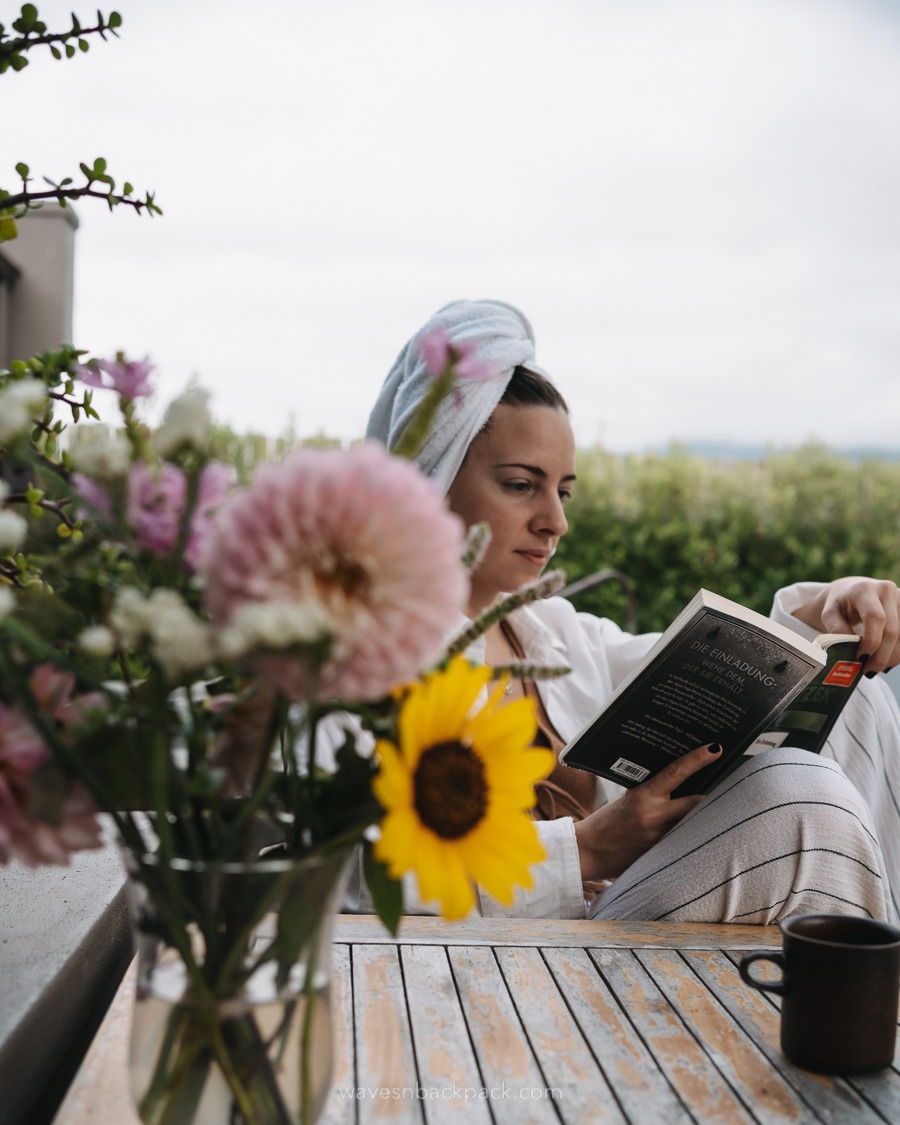
➳ Find all accommodations in Hermanus here
5. Mossel Bay & Surroundings
From Hermanus to Mossel Bay
The drive from Hermanus to Mossel Bay takes about two hours and leads you along one another scenic coastal roads in the region.
As you slowly said farewell to the whale capital of Hermanus, the landscape gradually changes: from dramatic cliffs and deep blue bays to vast grasslands and finally to the coastal town of Mossel Bay.
Mossel Bay holds historical significance, as it was one of the first landing sites of European sailors in South Africa.
Our Top 3 Highlights in Mossel Bay & Surroundings
- Place | Botlierskop Game Reserve, @botlierskop
- Accommodation | AirBnB
- Food | Botlierskop Game Reserve, @botlierskop
Sunset Game Drive at Botlierskop Game Reserve
The Botlierskop Game Reserve near Mossel Bay offers a fantastic safari experience in a private, scenic setting. The Sunset Game Drive as a day visitor is a true highlight, as you can witness lions, elephants, rhinos, and giraffes in the wild under the golden evening sun. The guides are highly knowledgeable and shared exciting insights about the wildlife and the reserve with us.
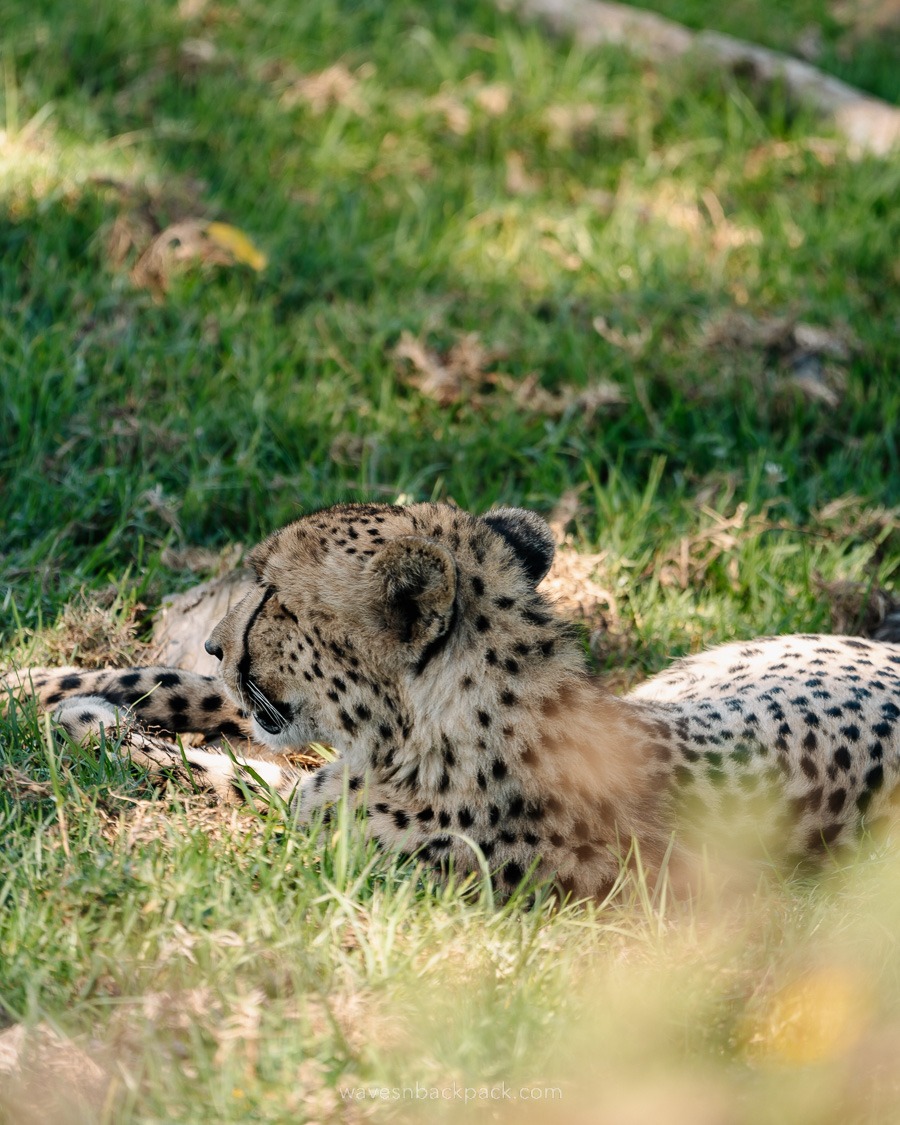
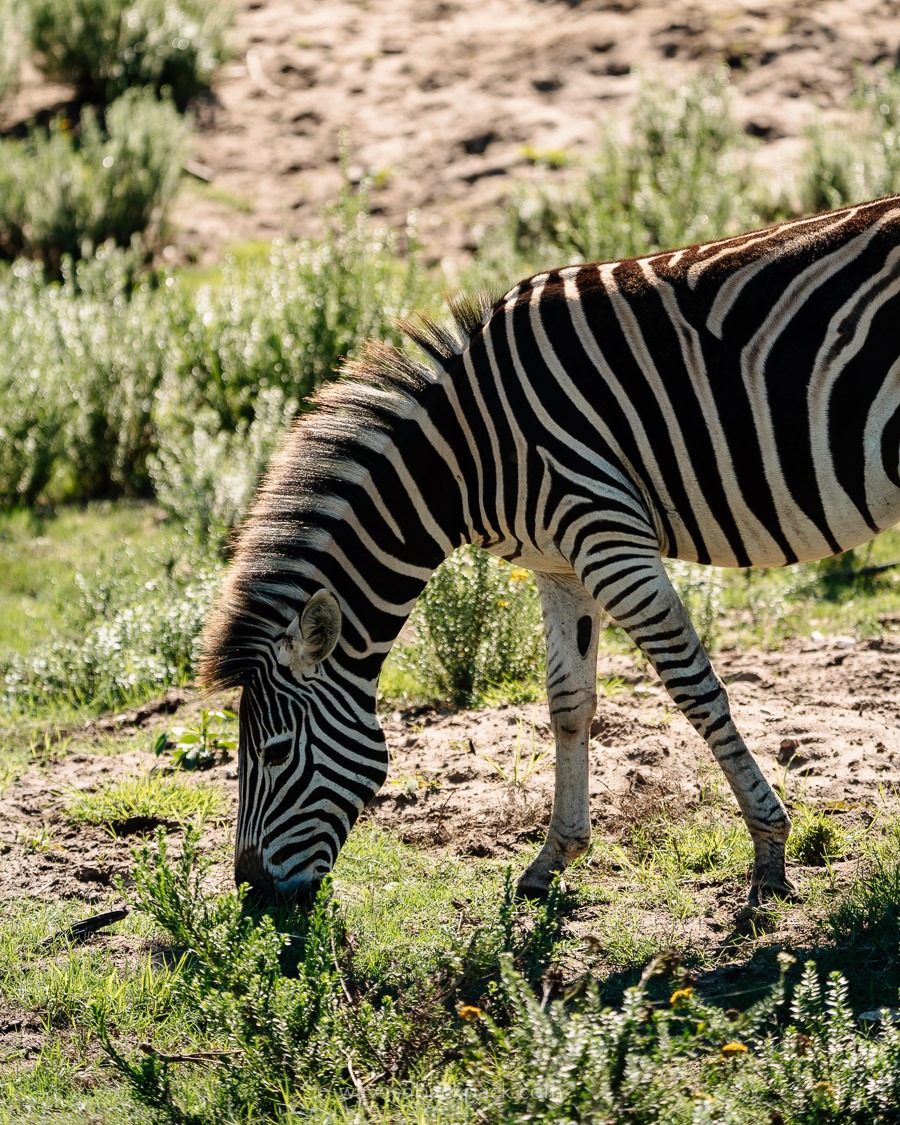
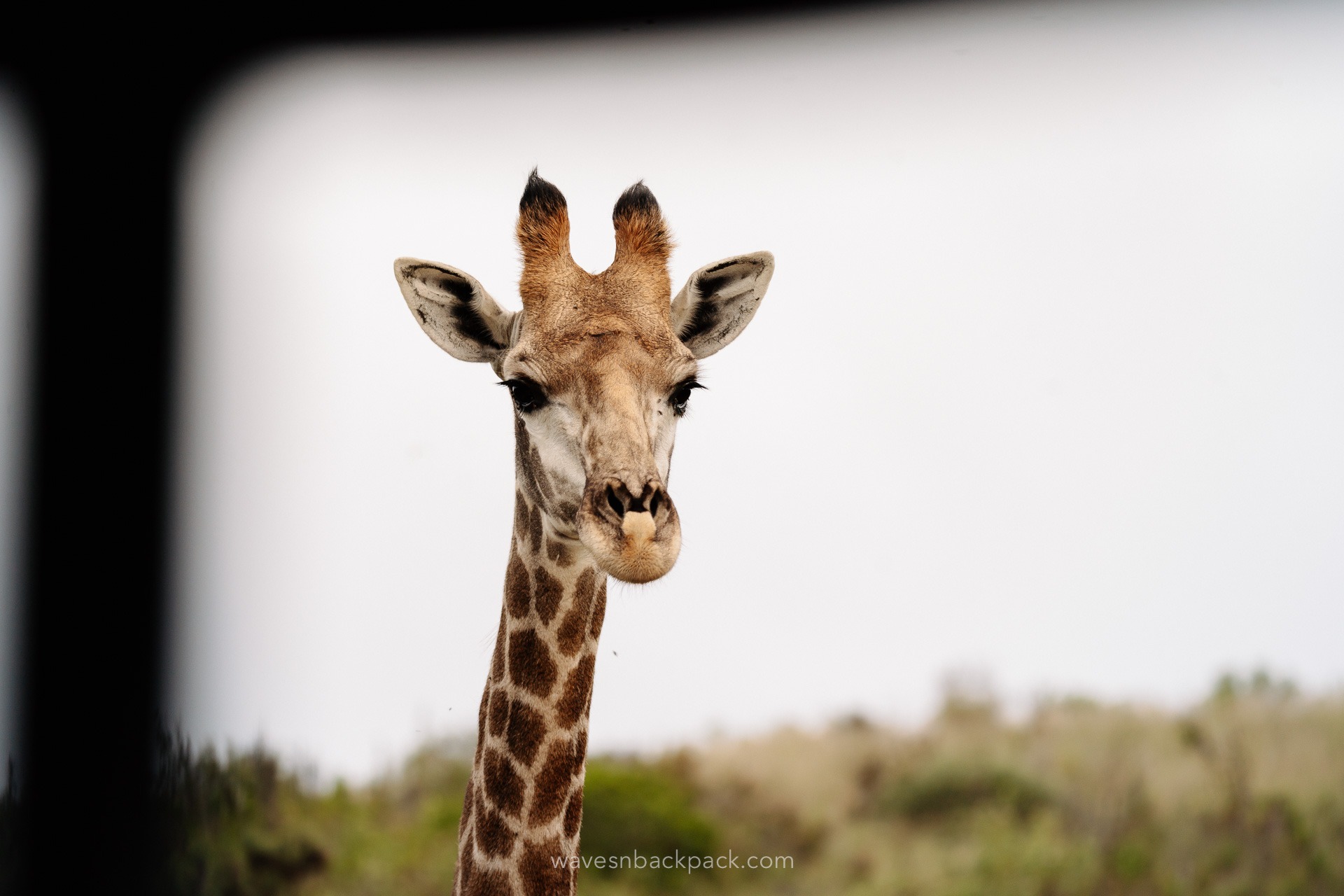
- Cost | approx. 800-1,000 ZAR (around 40-50 EUR) per person
- Duration | about 3 hours
- What to bring? | Warm clothing, as it can get chilly after sunset, as well as a camera and/or binoculars
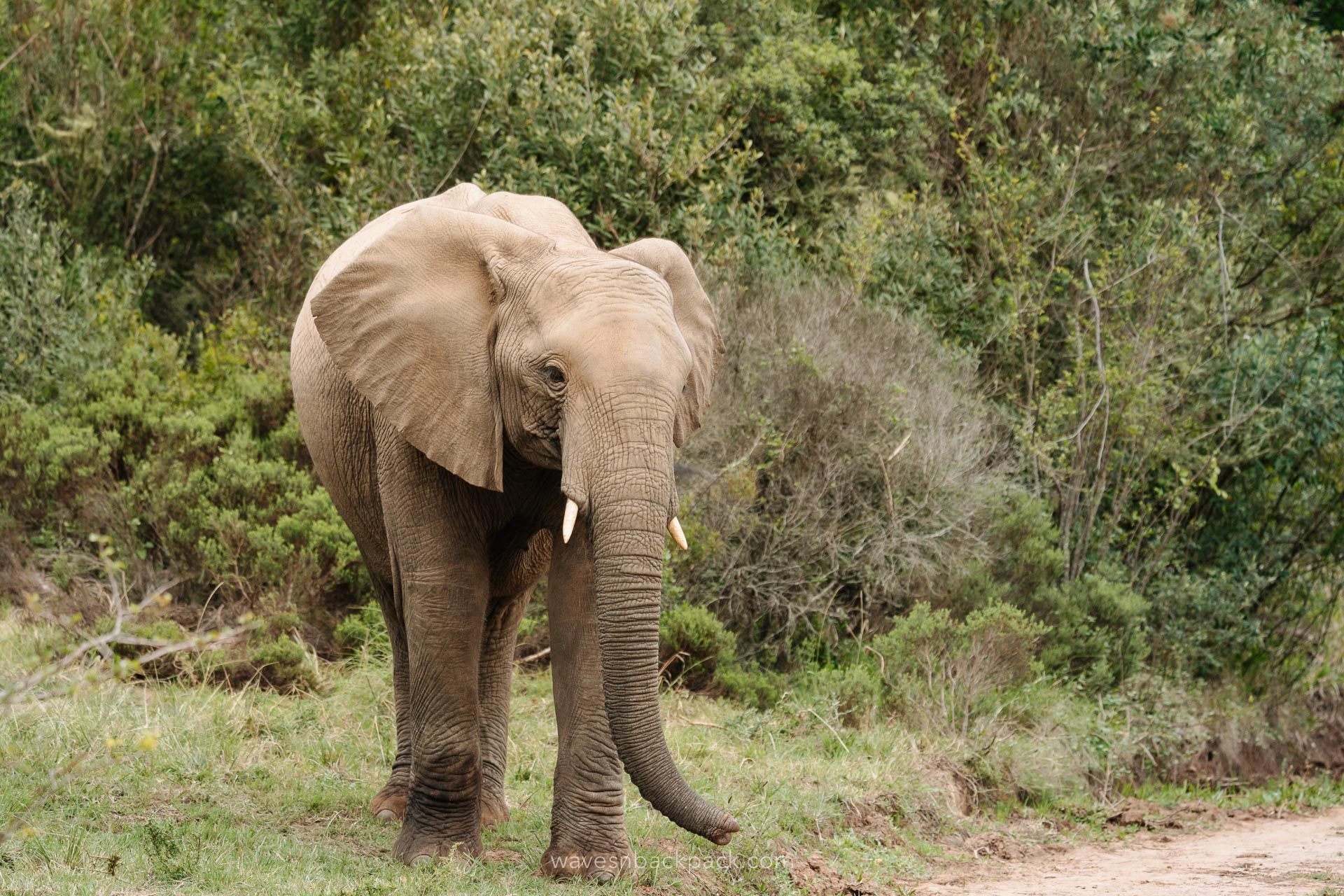
St. Blaize Trail – Hiking with Spectacular Ocean Views
The St. Blaize Trail is a 13.5-kilometer coastal hiking route stretching from St. Blaize Cave to Dana Bay. The path runs along the cliffs with stunning views of the Indian Ocean. With a bit of luck, you might spot dolphins and whales passing by.
- Cost | Free of charge
- Duration | 4-6 hours, depending on your pace
- Good to know | Sturdy shoes are recommended, as some sections are rocky. Don’t forget water and sun protection, as there is little shade along the way.
➳ Find all accommodations in Mossel Bay here
6. South Africa Garden Route: Wilderness
From Mossel Bay to Wilderness
The route from Mossel Bay to Wilderness promises breathtaking coastal scenery during your South Africa Garden Route trip. Along the roughly 60-kilometer drive, you can stop at scenic viewpoints, go kayaking on the Groot Brak River, or go surf in Victoria Bay.
In Wilderness, a relaxed outdoor paradise, you’ll find endless sandy beaches, spectacular hiking trails, and the opportunity to canoe along the Touw River. We didn’t visit it ourselves, but the “Map of Africa” viewpoint, offering a panoramic view of the coastal landscape, is said to be amazing.
Hiking in Wilderness
If you’re up for an idyllic hike through Wilderness National Park, the Half-Collared Kingfisher Trail is worth a visit.
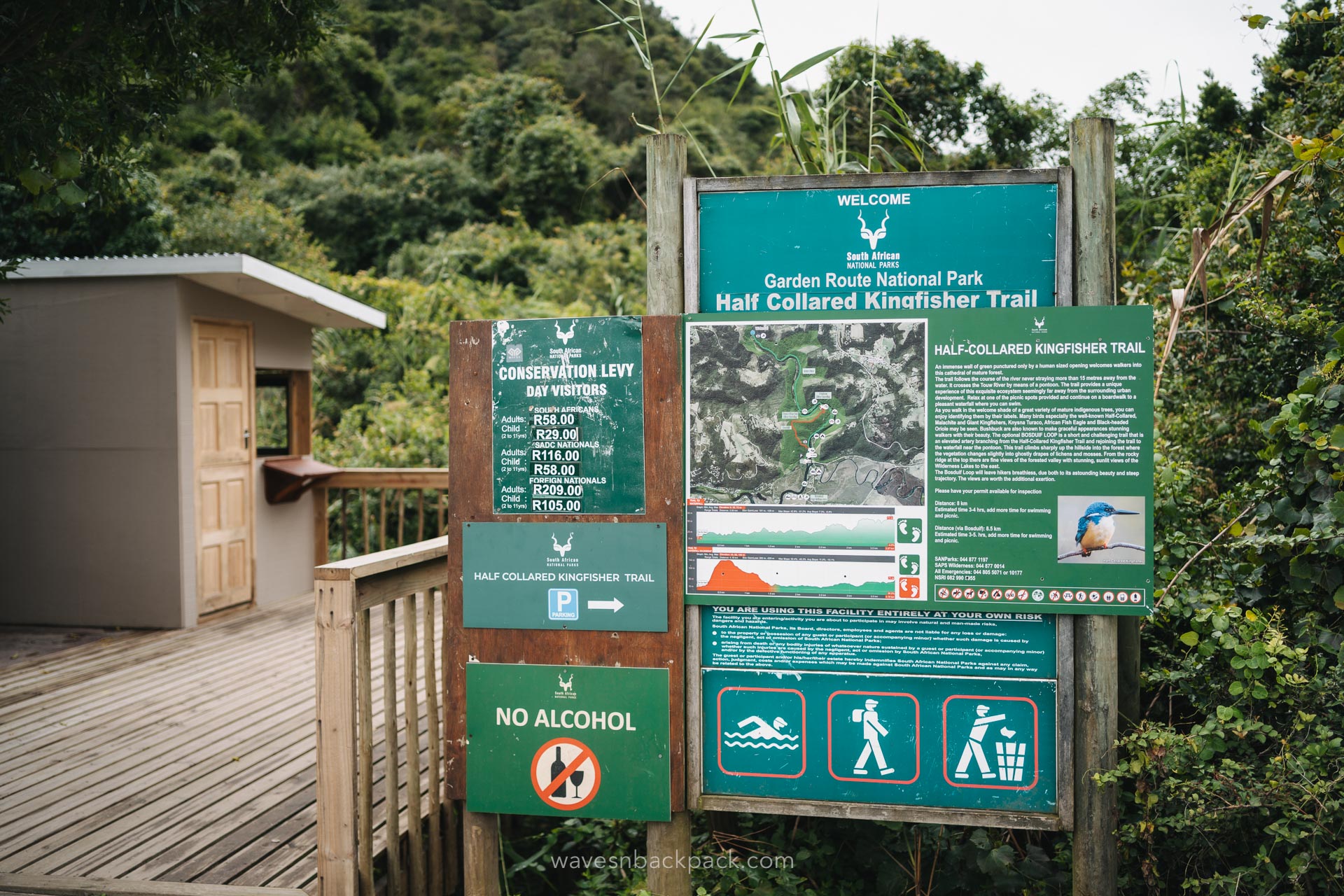
The trail stretches for about 7.6 kilometers (3.8 out and 3.8 back) through dense forests, past small waterfalls, and across wooden boardwalks.
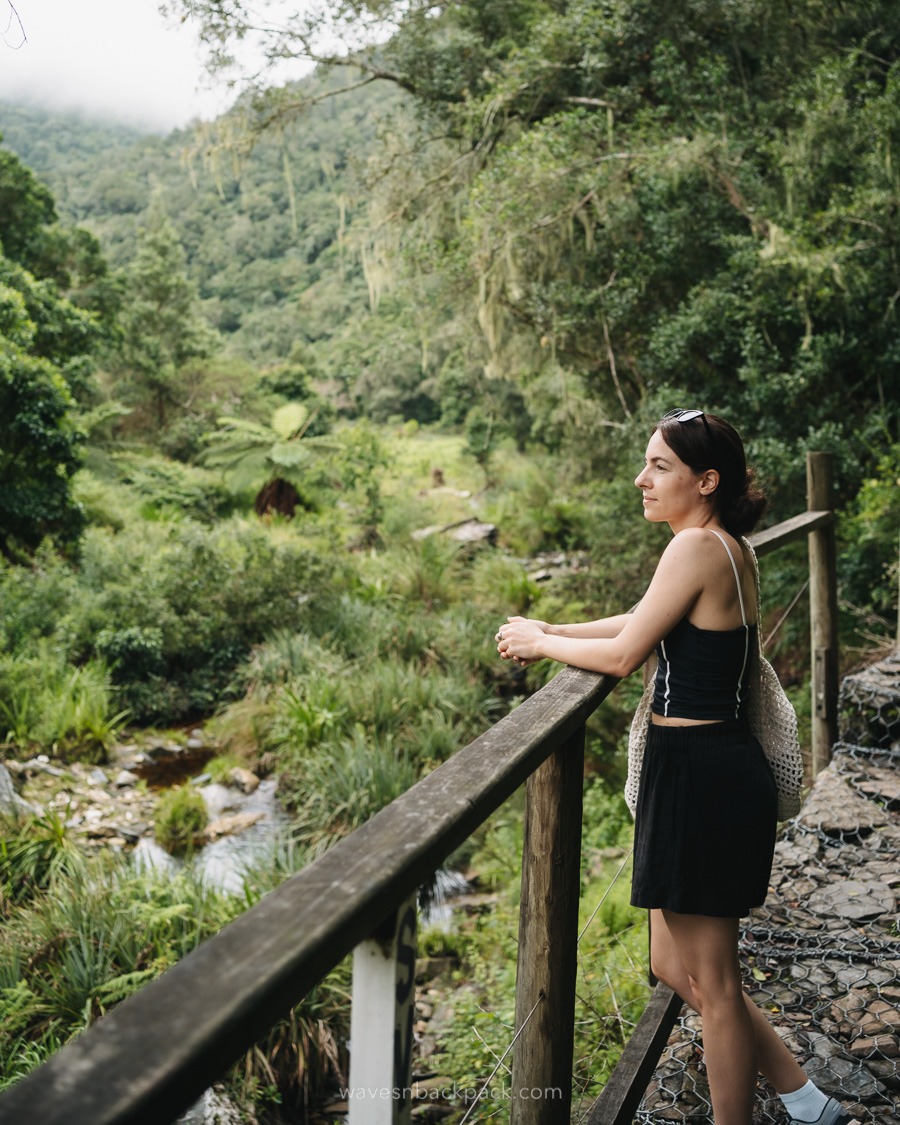

If you want to take it up a notch and get a different perspective: the hike can easily be combined with a kayak tour on the Touw River.
- Cost | We were quite surprised by the price of 209 ZAR (over 10 EUR) per person and found it rather steep. If you also want to rent a kayak, expect to pay around 250 ZAR (approx. 12 EUR) for two hours.
- Opening hours | 7:30 am – 5:30 pm
- Good to know | The trail is fairly easy, family-friendly, and well-marked. At the end of the trail, there is a waterfall where you can cool off before heading back. Running shoes, water, and sun protection are recommended, as parts of the trail pass through open clearings where the air can get quite warm.
➳ Find all accommodations in Wilderness here
7. Knysna
From Wilderness to Knysna
The drive from Wilderness to Knysna winds through dense forests and past deep lagoons over approximately 45 kilometers.
Knysna – The Best View at the Knysna Heads
We weren’t overly impressed by Knysna itself, but for us, it was just a stopover for the Knysna Heads – and the promenade with its food options didn’t really convince us. That might have been due to the time of day, as many restaurants were closed, and in general, we’re not the biggest fans of waterfront areas.
However: Knysna is definitely worth a stop – the Knysna Heads are truly impressive, and the view over the lagoon from above is breathtaking.
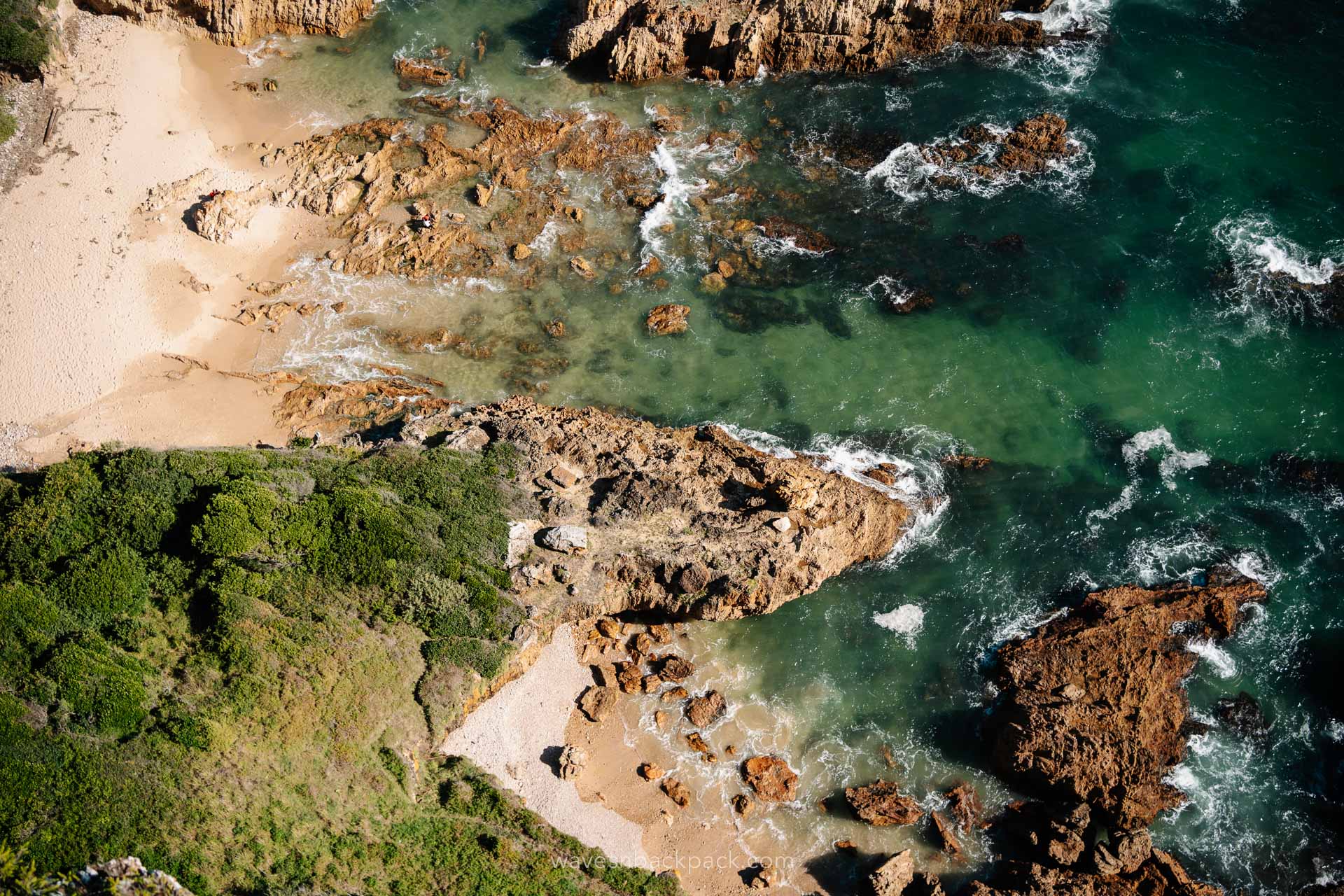
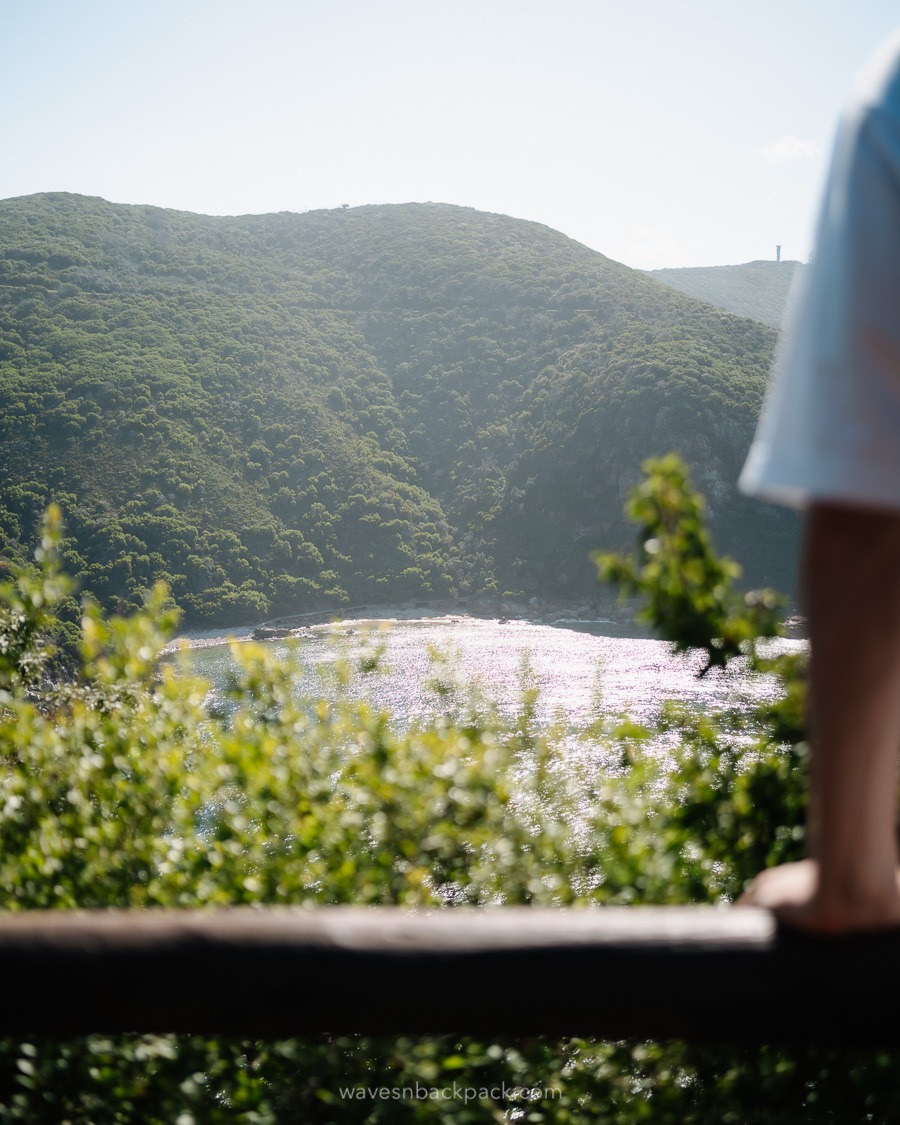
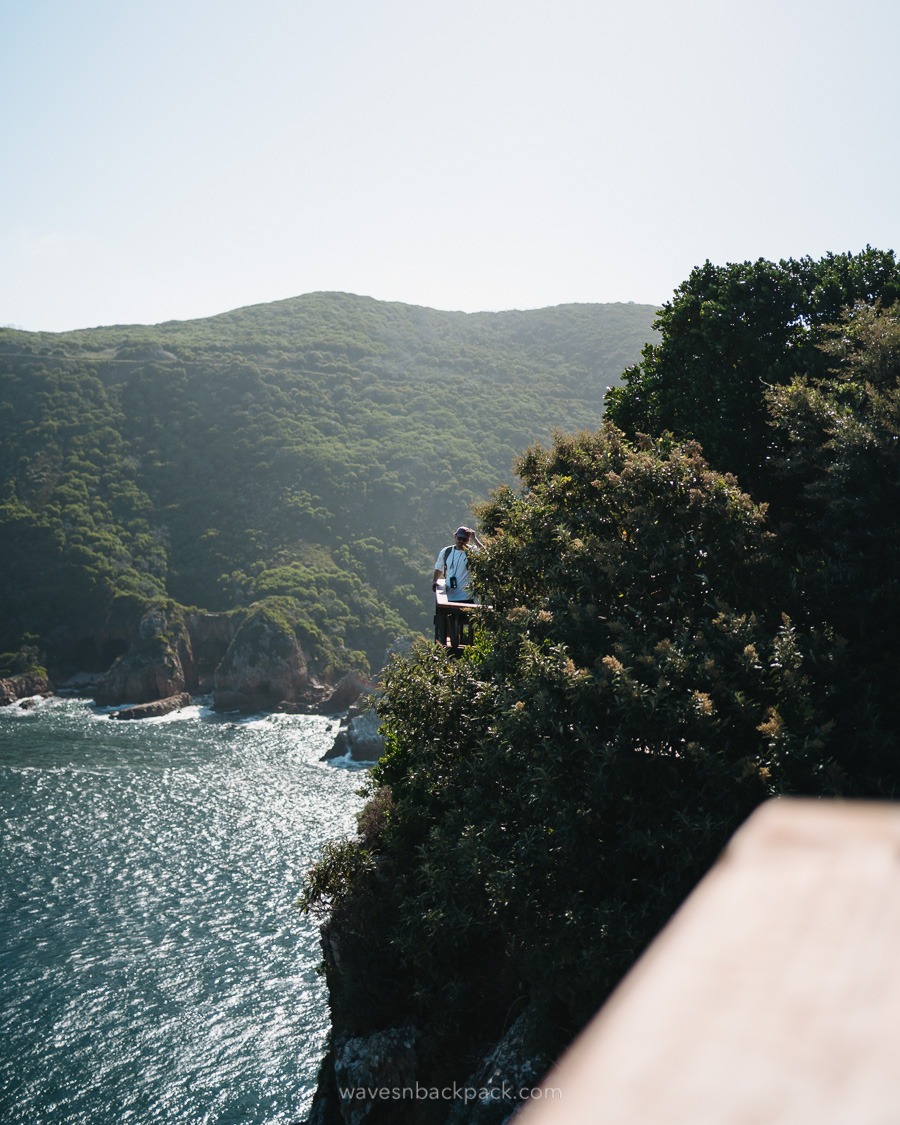
➳ Find all accommodations in Knysna here
8. Plettenberg Bay
From Knysna to Plettenberg Bay
The drive from Knysna to Plettenberg Bay is quite short, covering around 30 kilometers.
A worthwhile stop along the way is the Garden of Eden, a magical hiking trail through dense forests with ancient trees and exotic bird species.
Plettenberg Bay, or simply “Plett,” is a coastal town that is home to the Robberg Nature Reserve and invites visitors to enjoy outdoor activities such as horse riding or kayaking.
Our Top 3 Highlights in Plettenberg Bay
- Place | Breakfast at The Palms Plett, @thepalmsplett
- Activity | Horseback riding in Kurland, @kurland_park_horse_trails
- Food | Dinner im Barrington’s Plettenberg Bay, @barringtons_plett
Breakfast at The Palms Plett
Our favorite breakfast spot. Incredibly delicious coffee with a view of the lagoon.
Robberg Nature Reserve
At Robberg Nature Reserve, you can explore the coastline and its resident seals on three different hiking trails:
- The Gap (2.1 km)
- Witsand (5.5 km)
- The Point (9.2 km)
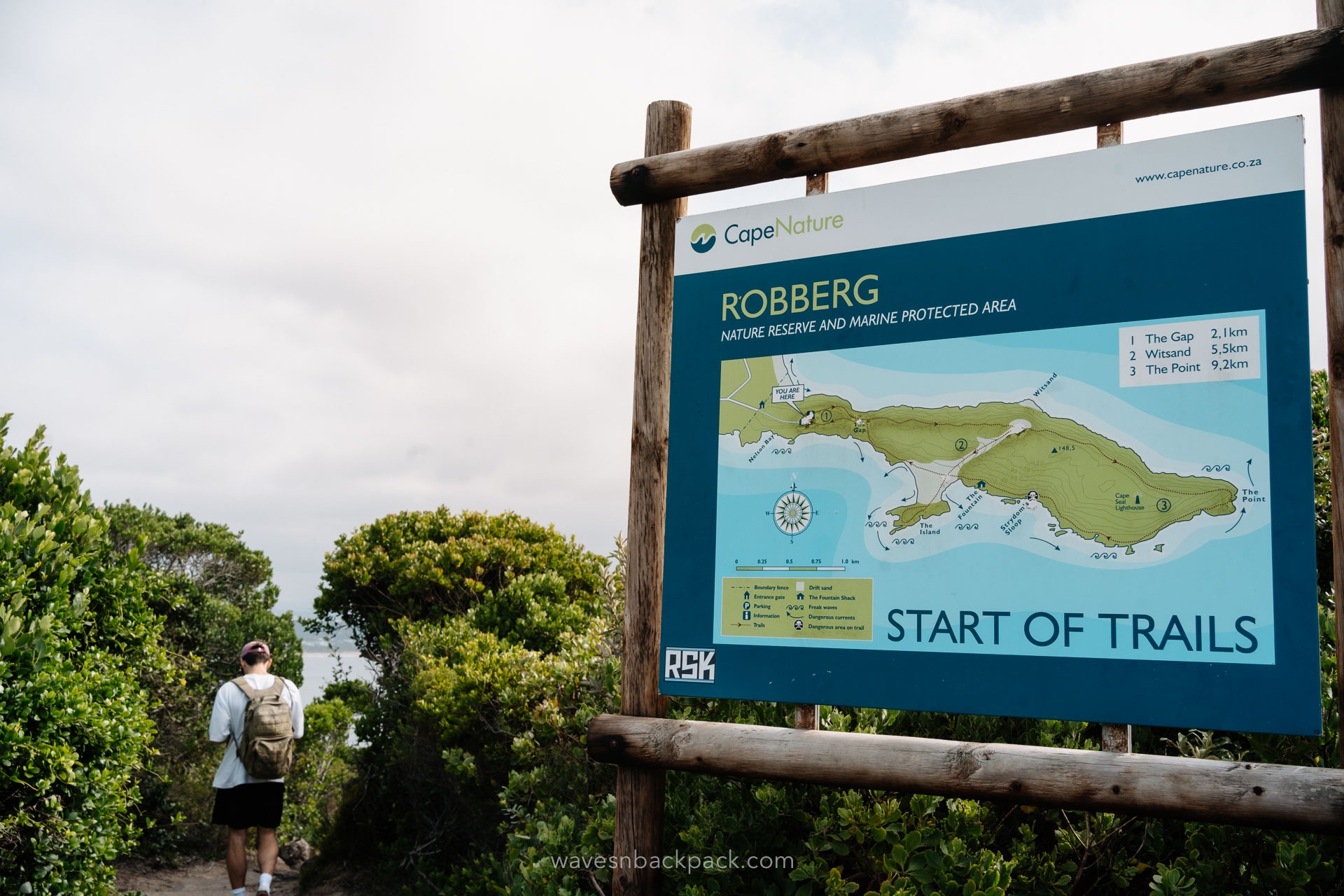
The trails start at a parking lot, which is still quite empty in the morning and has a small stand selling coffee and snacks. Depending on which route you choose, you’ll spend the next few hours walking along the coast via steps and boardwalks.
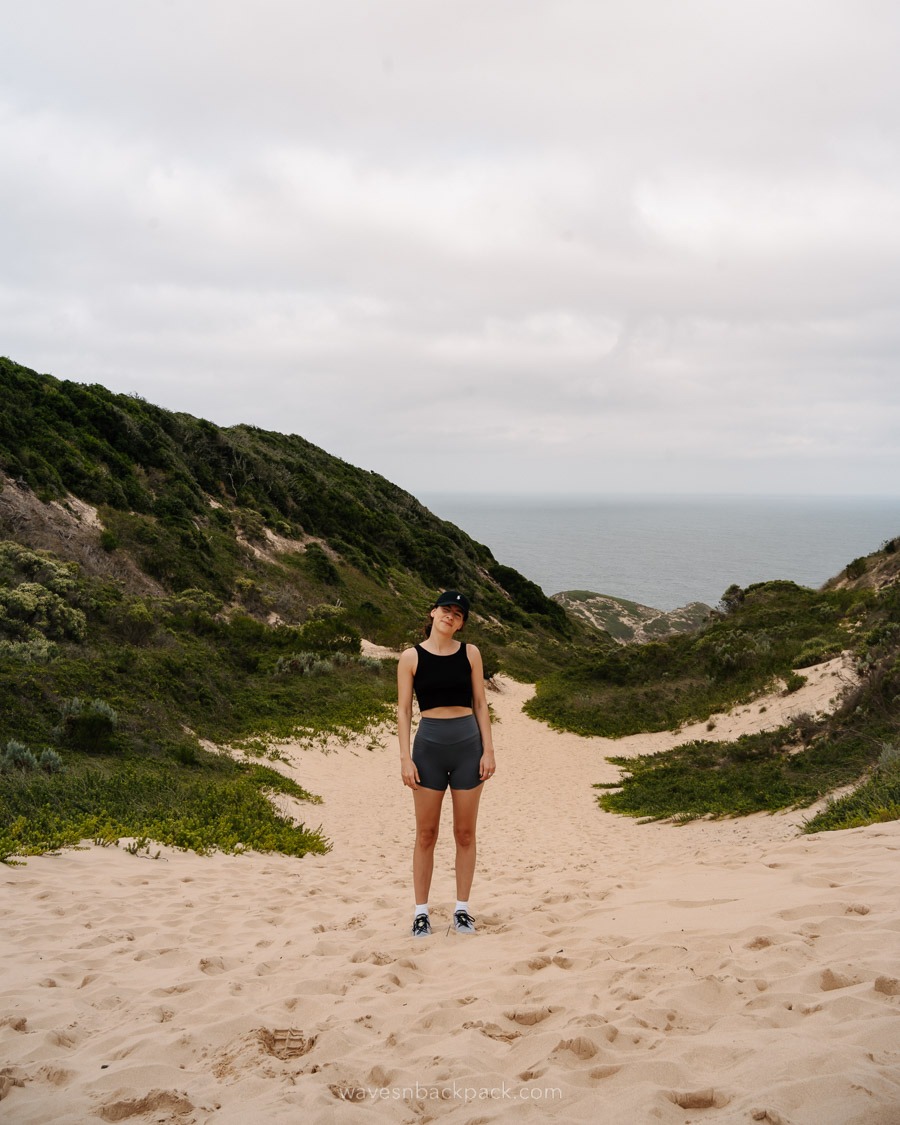

Important: On the short trail, you’ll only have a chance to spot seals from above if you’re lucky. The best viewing spot is along the medium and long routes. We took the medium trail in the morning and found it to be a great length.
Horseback Riding in Kurland
We had the chance to go on a horseback riding excursion with Kurland Park Horse Trails near Plettenberg Bay, riding through meadows and forests – an experience we highly recommend when on the South Africa Garden Route. Led by an experienced guide and on incredibly gentle horses, the tour is suitable for both beginners like us and experienced riders.
The Kurland Estate is well known for its polo facilities and equestrian opportunities in the Plettenberg Bay area. Kurland Park Horse Trails offers the following riding options – we chose the 2-hour ride:
- 1-hour ride through the forest and farmland
- 2-hour ride along the Hol River and through the forest
- Wine & Ride Tour with tapas and wine tasting
- Romantic Package including a wine ride followed by a couples massage
During our ride, we passed sheep, rode across meadows, and through forests. At times, we were curiously watched by baboons (luckily, they’re afraid of horses! :)). Our guide shared a lot of interesting facts about the local area.
Juli’s horse was particularly keen on stopping every few meters for a snack before trotting quickly to catch up with the group.
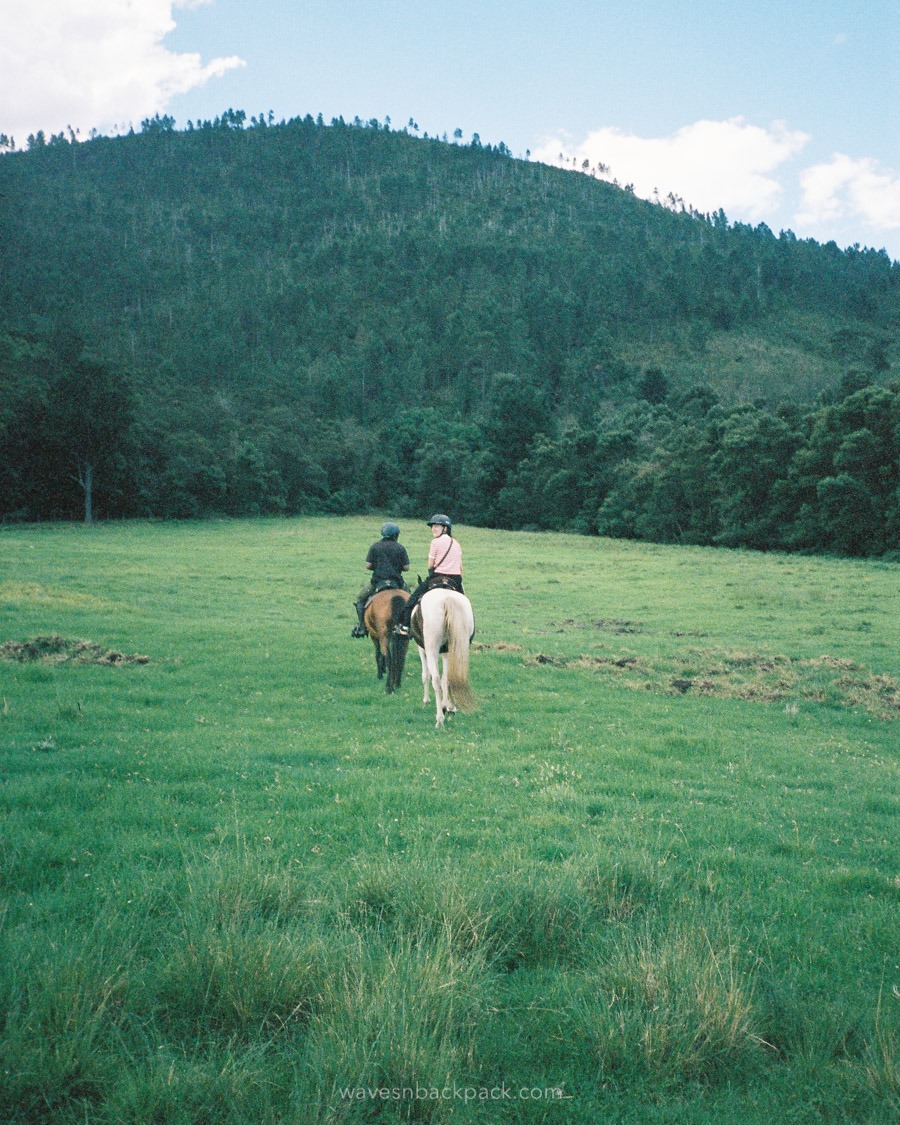
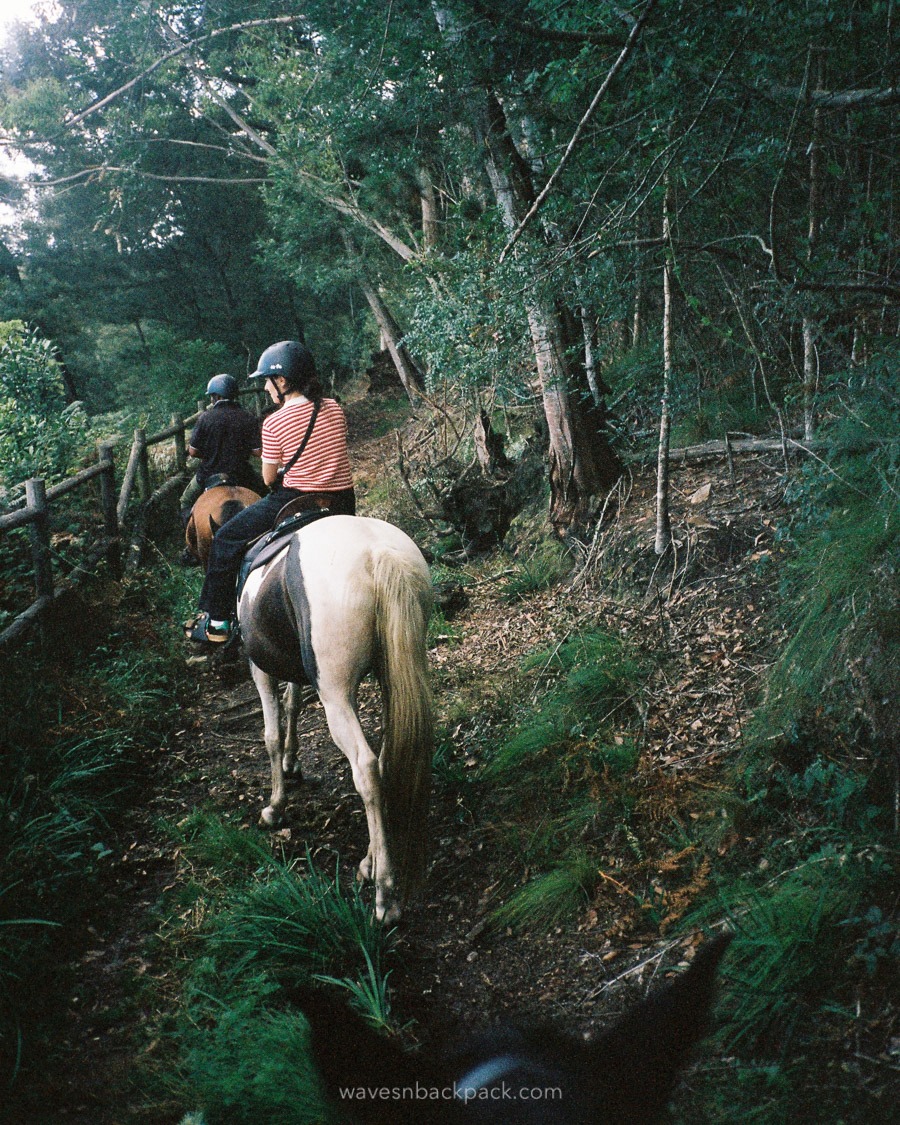
The surroundings are truly beautiful – peaceful, idyllic, and perfect for anyone looking for a bit of nature and relaxation.
➳ Find all accommodations in Plettenberg Bay here
9. Tsitsikamma Nationalpark
From Plettenberg Bay to Tsitsikamma National Park
The drive from Plettenberg Bay to Tsitsikamma National Park takes you over approximately 70 kilometers and, since recently, via a toll road (67 ZAR = 3.40 EUR) into one of South Africa’s most spectacular natural paradises.
Once you arrive in Tsitsikamma, you’ll be greeted by beautiful coastal landscapes, dense forests, an incredible number of hiking trails, and countless outdoor activities like canyoning, black tubing, and river rafting.
The suspension bridge over the roaring Storms River mouth is an absolute highlight, just like the Mouth and Lookout Trail.
And we, unfortunately, didn’t manage to do it, but – we were so close to booking a kayak tour through the gorge. It’s supposed to be absolutely amazing, and we’d definitely make up for it on our next visit!
- Cost | Day ticket for 236 ZAR (approx. 12 €) per person
- Opening hours | Vary depending on the season – check the official website
- Good to know | You can stay overnight in the national park. If you choose not to, it’s best to arrive early to make the most of your day.
➳ Find all accommodations in Tsitsikamma National Park here
10. Jeffrey’s Bay
From Tsitsikamma National Park to Jeffrey’s Bay
The route from Tsitsikamma to Jeffrey’s Bay, spanning around 110 kilometers, is the perfect road trip section for surfers.
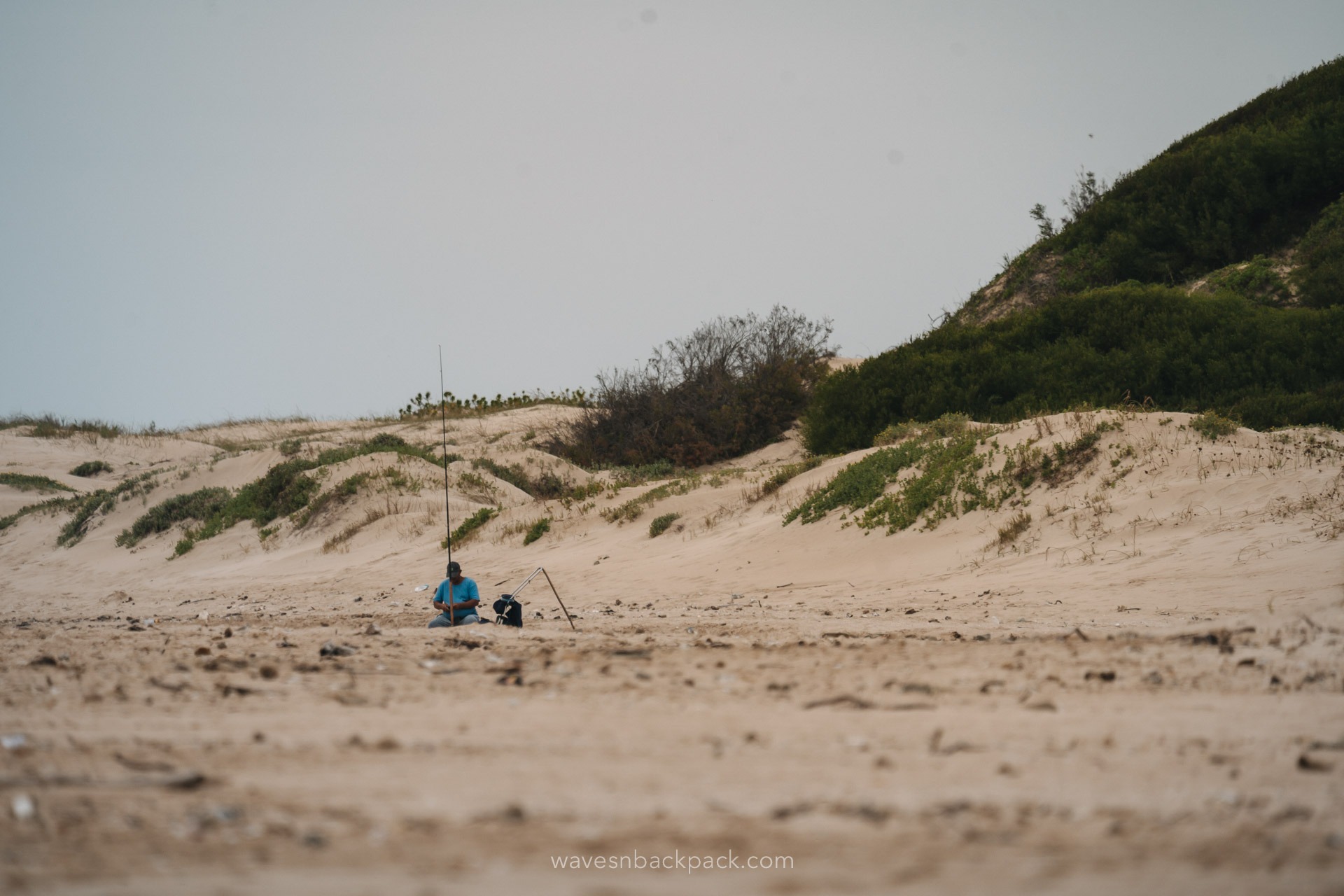
After the dense forests of the national park, the landscape opens up, revealing the endless sandy beaches of the East Coast. Jeffrey’s Bay, or simply “J-Bay,” is one of the world’s top surf meccas, drawing wave riders with legendary spots like Supertubes and Boneyards.
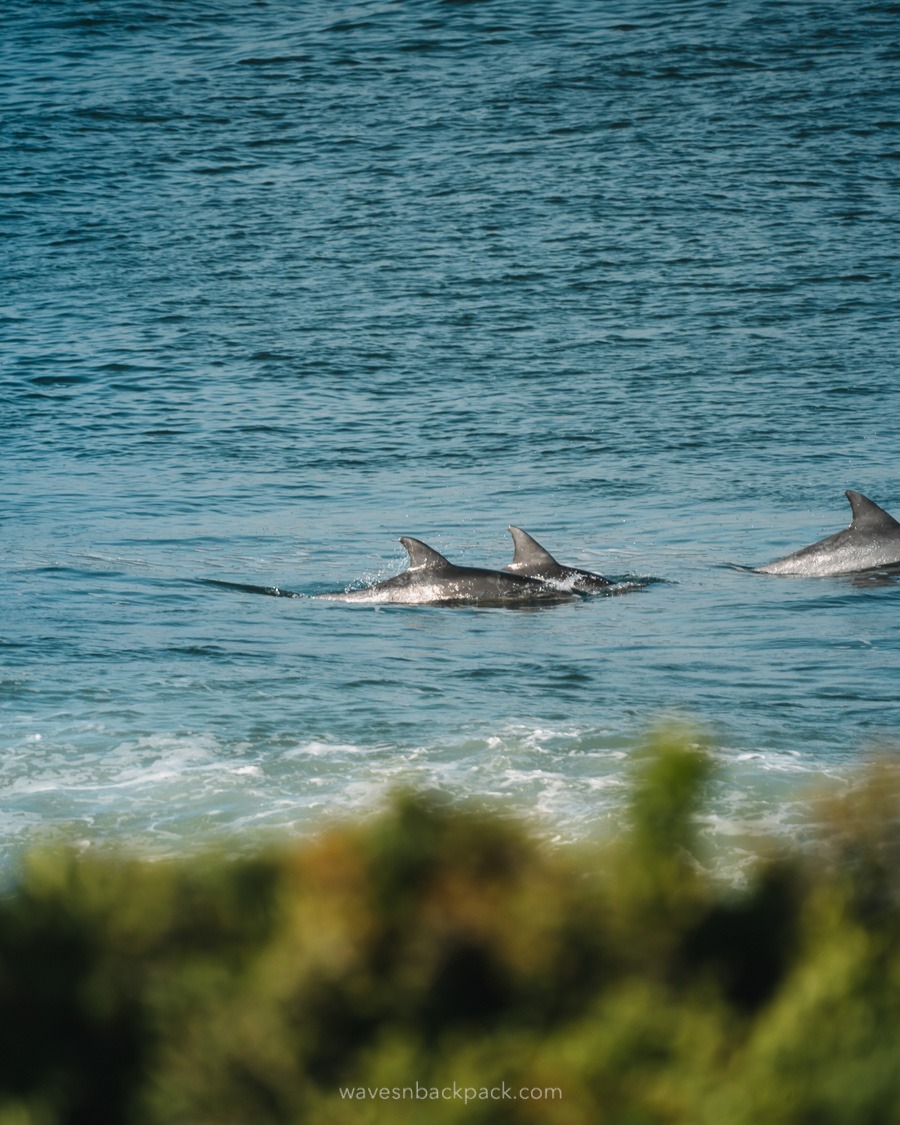
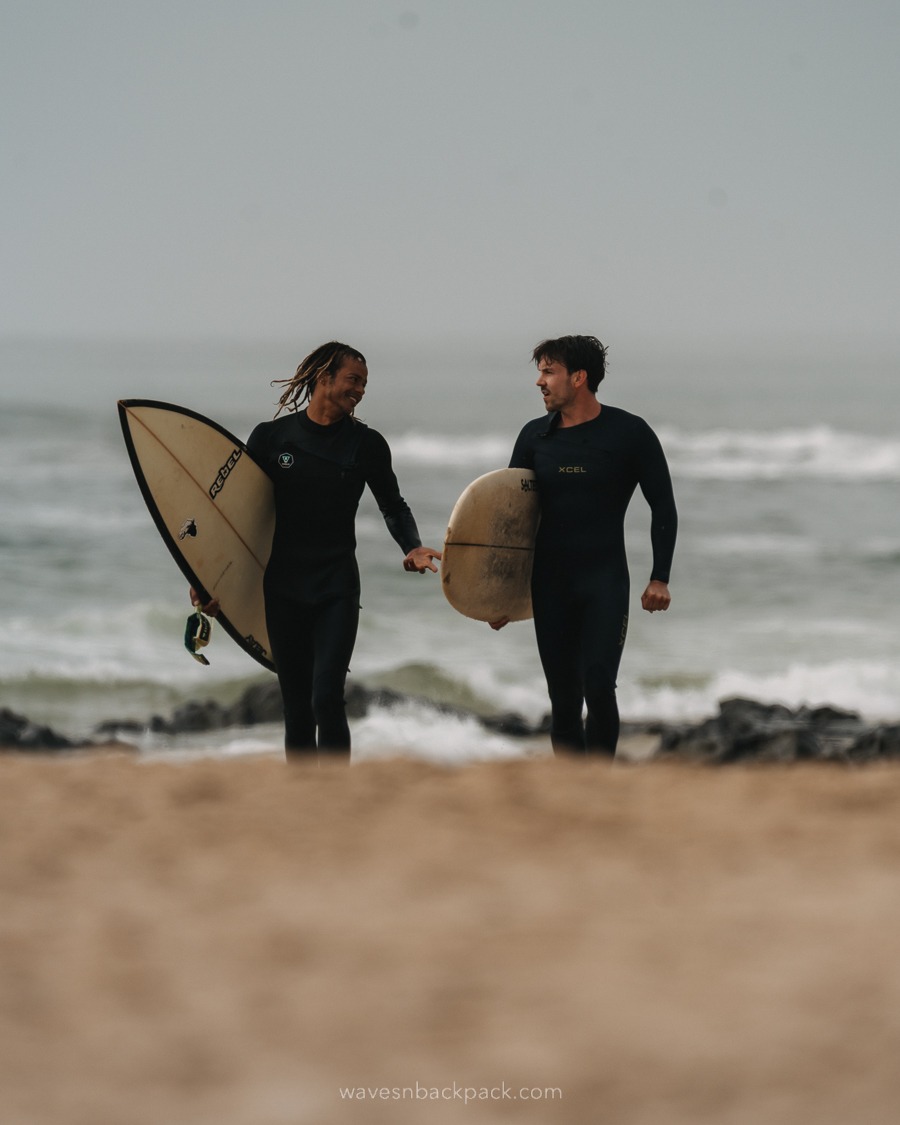

Our Top 3 Highlights in J-Bay
- Spot | Dinner with a sea view on our terrace
- Accommodation | Shaloha Guesthouse on Supertubes
- Food | The best South African cuisine at Die Walskipper, @diewalskipper
➳ Find all accommodations in J-Bay here
11. Amakhala Game Reserve
From Jeffrey’s Bay to Amakhala Game Reserve
The final leg of this epic road trip takes you from Jeffrey’s Bay to the Amakhala Game Reserve, about 170 kilometers inland – because a night in a game reserve is an experience that shouldn’t be missed on any South Africa Garden Route trip.
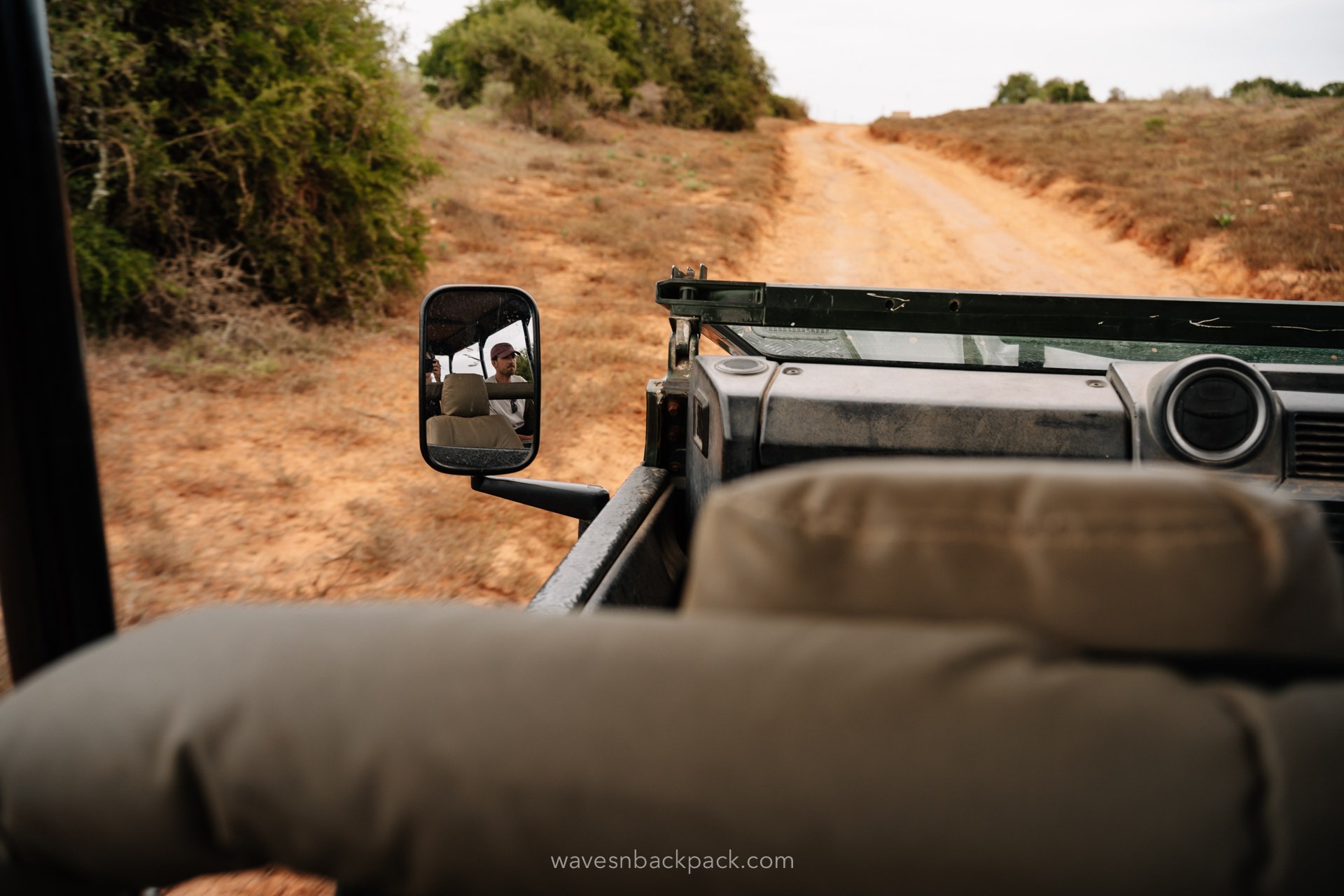
The Amakhala Game Reserve offers unforgettable safari experiences: here, you can witness the Big Five – lions, elephants, rhinos, buffalos, and leopards – in their natural habitat. A sunrise safari is particularly magical, making it the perfect finale to an incredible journey along the Garden Route!
Our Top 3 Highlights at Amakhala Game Reserve
- Location | Induli Game Lodge, @indulilodge
- Accommodation | Induli Game Lodge
- Food | Induli Game Lodge
What is a Game Reserve?
A game reserve is a protected wildlife area designed to conserve nature while promoting sustainable tourism. Unlike zoos or safari parks, animals here roam freely in their natural habitat, though the vast area is enclosed by fences (a legal requirement in South Africa).

Guided game drives allow you to get up close to incredible wildlife — really close. 😀 Our jeep was literally crossed by a lion and a lioness during our safari, and it was absolutely crazy!
Game Reserve vs. National Park – What’s the Difference?
While national parks are usually government-run and open to all visitors, game reserves are often private conservation areas with limited guest numbers. This usually means smaller group safaris, fewer crowds, and often more luxurious (and pricier) accommodations.
Good to Know: About the Amakhala Game Reserve
Founded in 1999 in the malaria-free Eastern Cape of South Africa, Amakhala Game Reserve was created as a conservation initiative to restore the land – once used for livestock farming – back to its natural state and reintroduce wildlife to the area.
Amakhala is a true gem in the Eastern Cape, boasting an impressive variety of wildlife, including the famous Big Five: lion, elephant, buffalo, leopard, and rhino. But that’s not all – you might also be lucky to spot cheetahs, giraffes, zebras, wildebeest, and various antelope species.
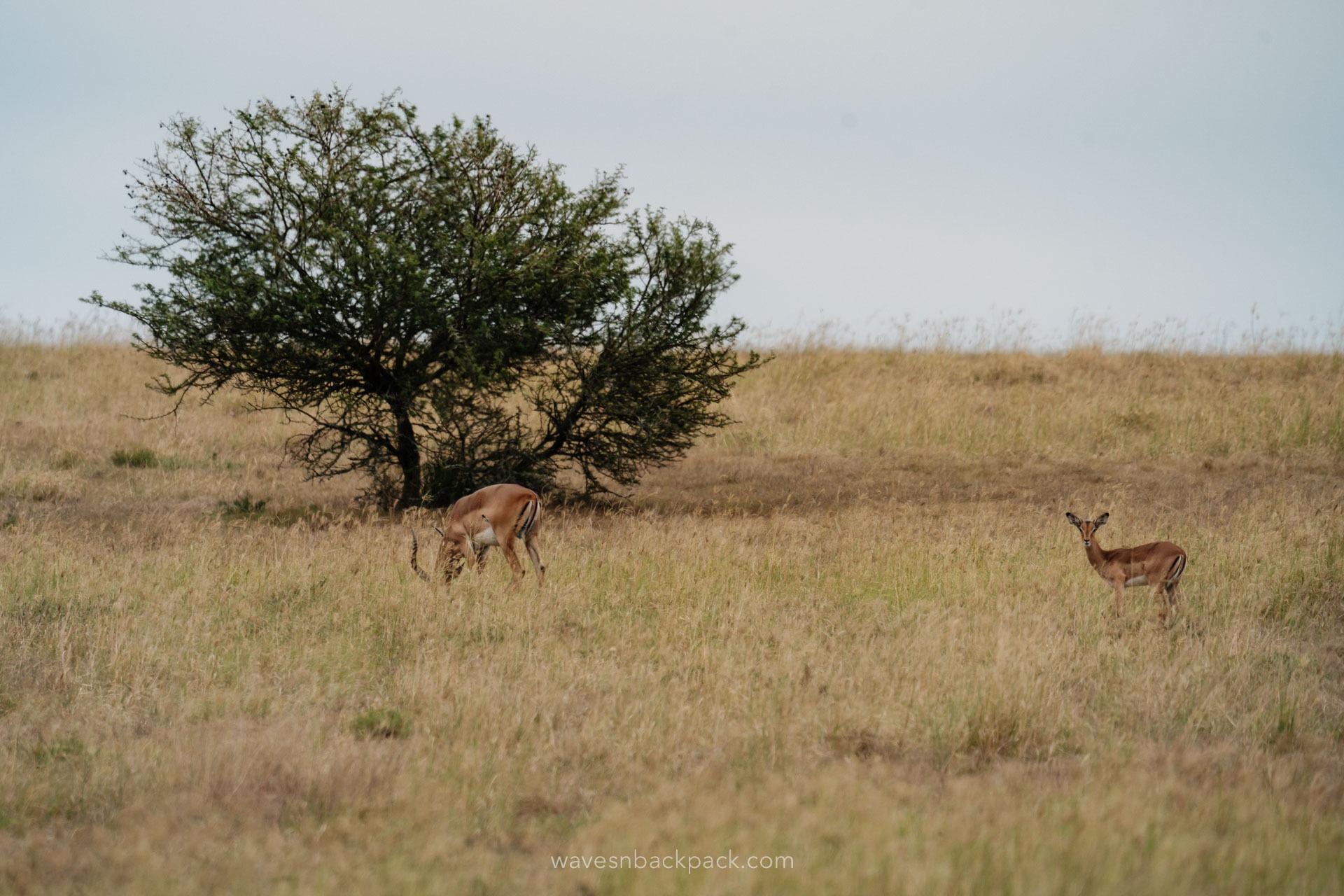
Covering over 9,000 hectares, the reserve features a mix of savannas, rivers, and dense forests – a true paradise for wildlife (and photographers!).
Amakhala Game Reserve is home to 11 lodges, and we spent one unforgettable night at Induli Game Lodge.
Spoiler: If we’d do it again, we’d definitely spend two nights in order to enjoy the lodge with all its facilities.
Induli Game Lodge – Luxurious Safari in the Wild
For those looking to combine an exclusive experience with a peaceful atmosphere, Induli Game Lodge in the malaria-free Amakhala Game Reserve is, in our opinion, the perfect choice.

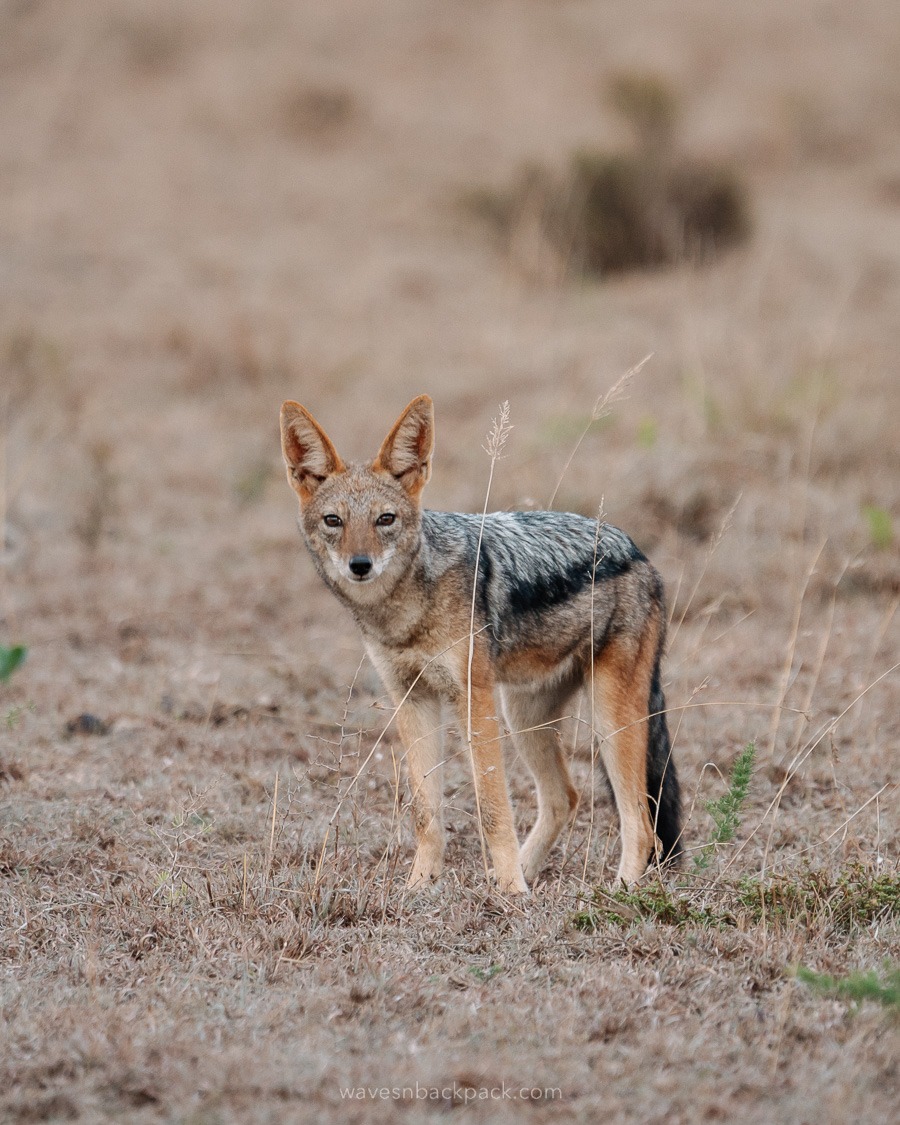

This family-run lodge, newly opened in October 2024, offers stylish chalets with panoramic views of the African wilderness – you might even spot elephants or other wildlife right from the lodge.

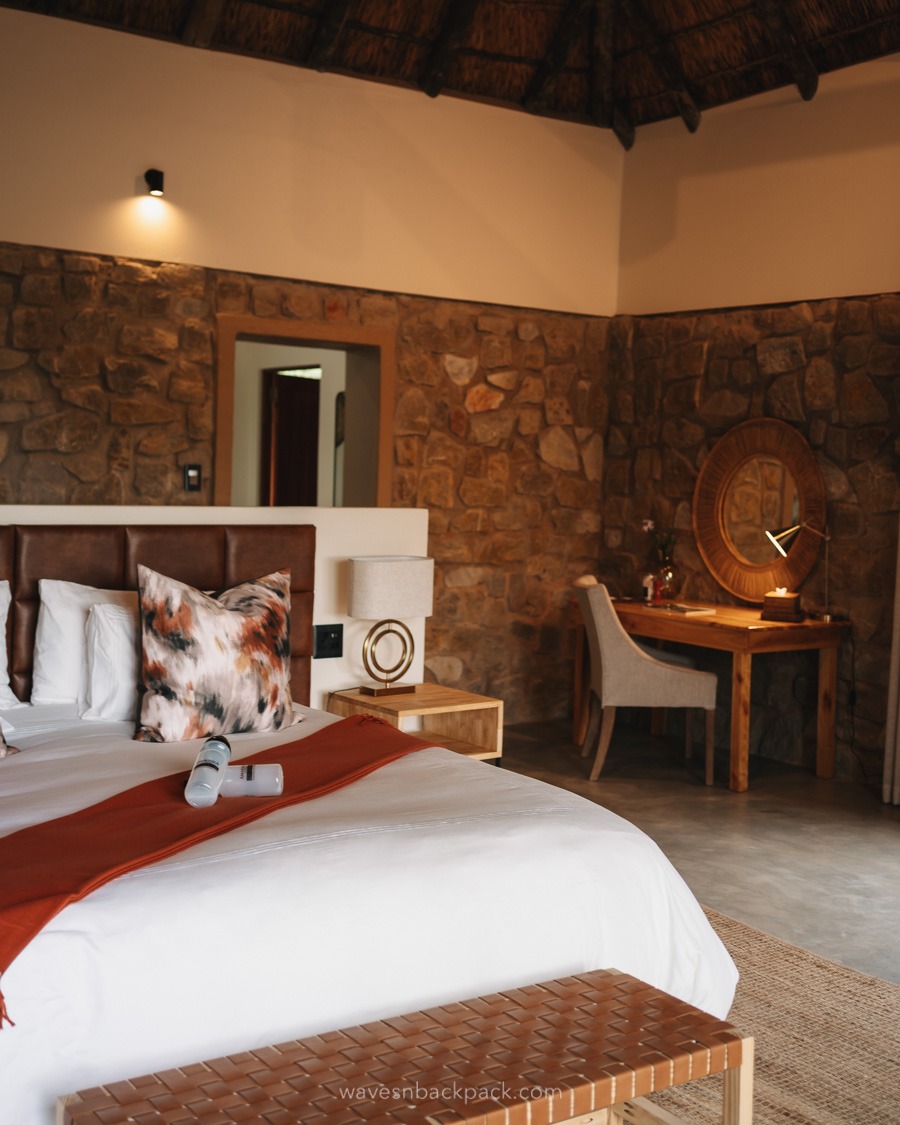
Induli features three beautifully restored suites, each designed with great attention to detail. A stay at the lodge includes:
- daily 3-hour sunset game drive, complete with a small picnic
- daily 3-hour sunrise game drive, also with a picnic
- All-inclusive meals & drinks, featuring local ingredients (lunch, dinner, and breakfast)
- In-room amenities: Minibar, coffee machine, yoga mats & small weights, bathtub, air conditioning, WiFi
- Access to the infinity pool
✨ Optional add-ons: Yoga sessions, walking safaris, photography safaris, horseback riding experiences
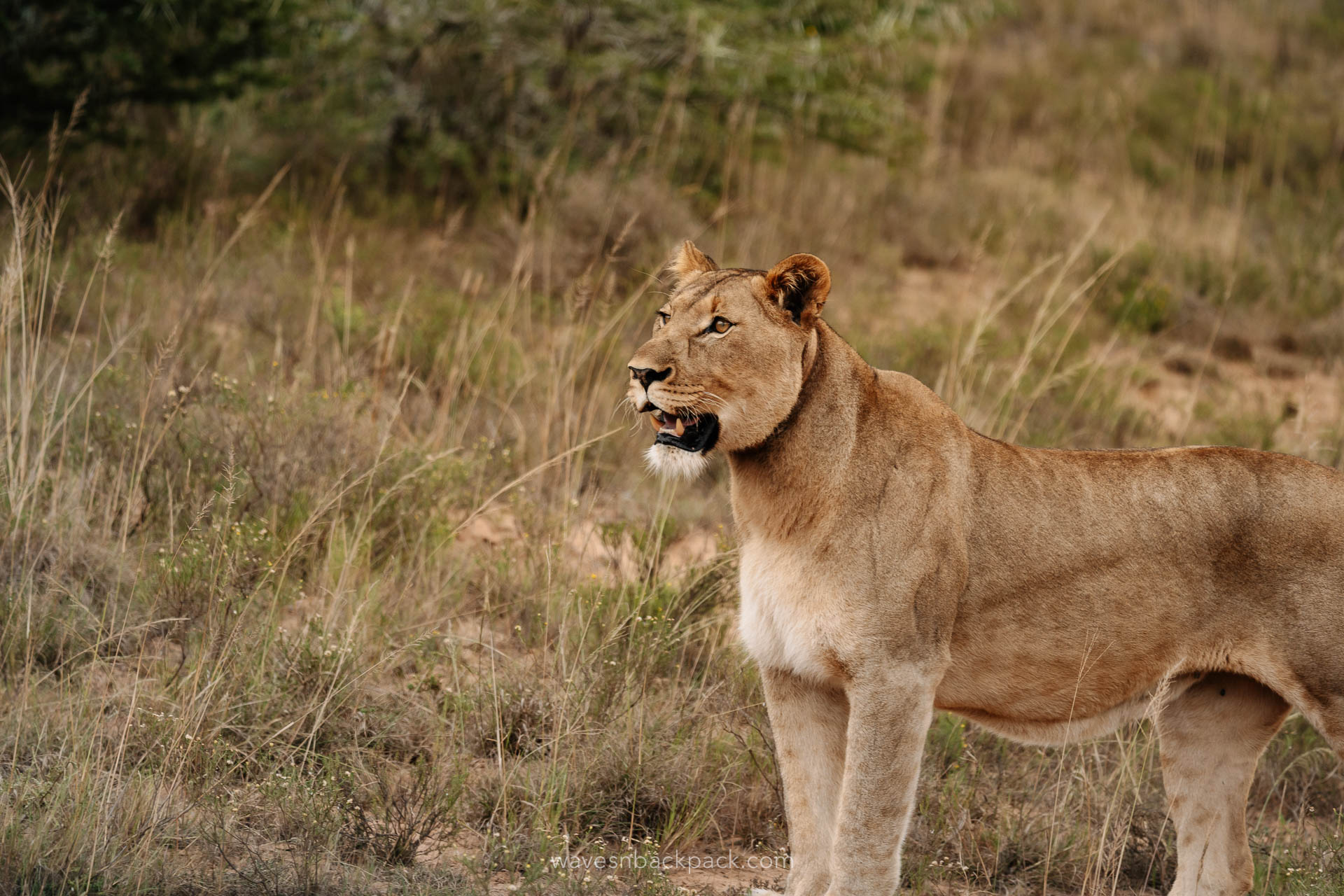
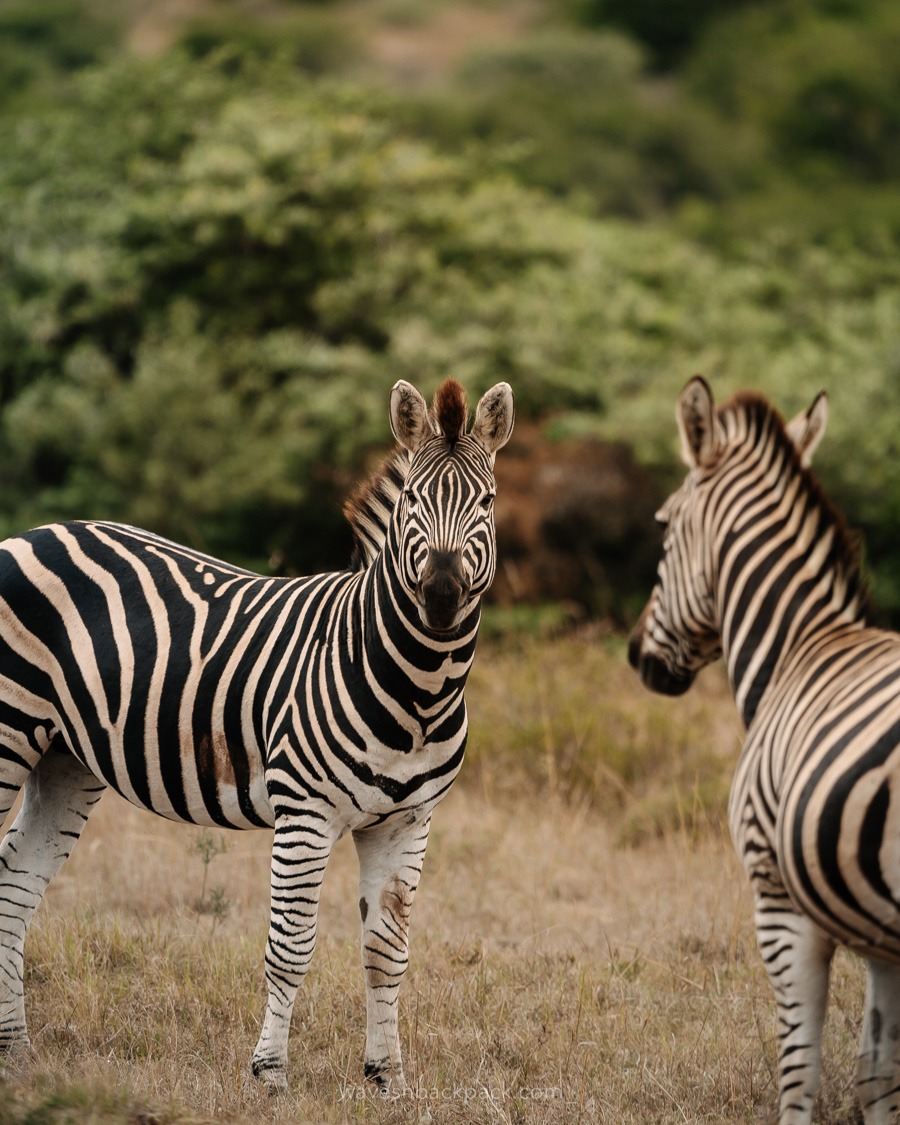
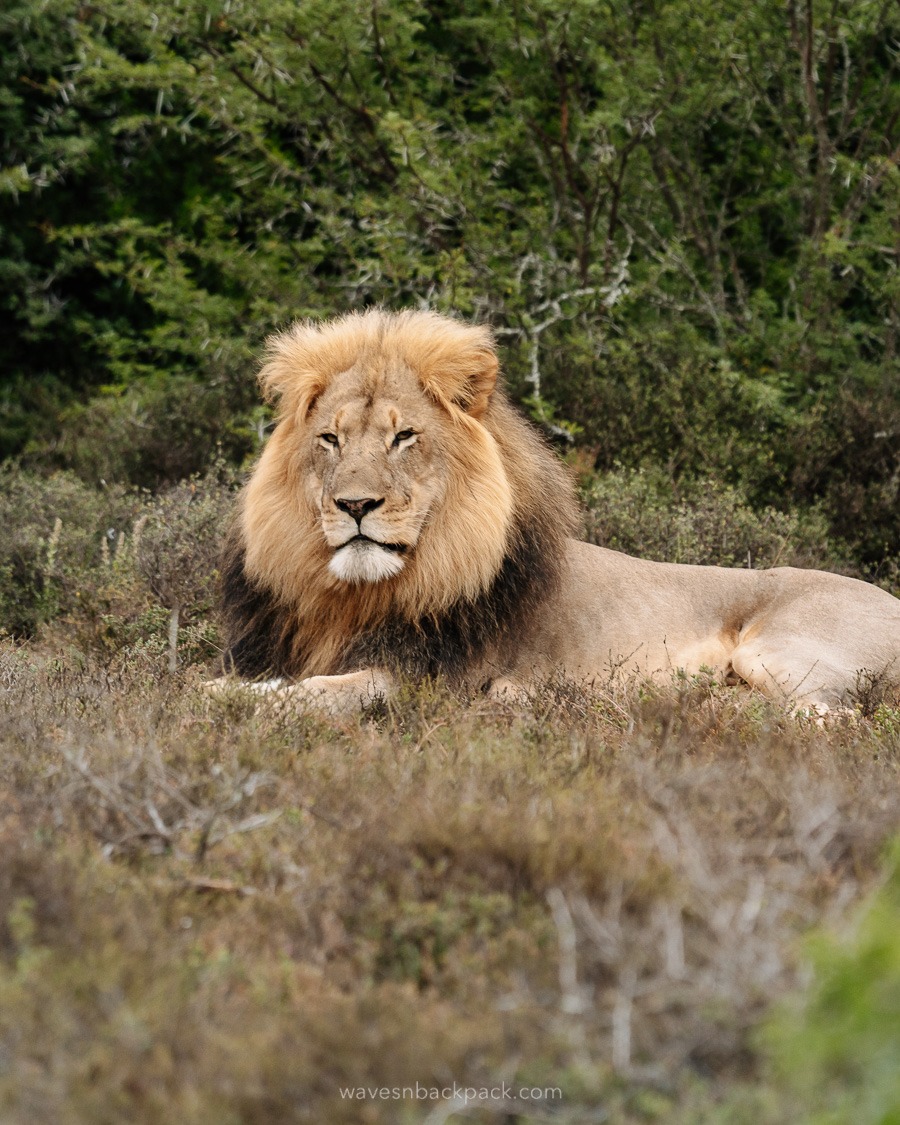
After an exciting day searching for the Big Five, you can recharge by the infinity pool, enjoy a delicious dinner made with local ingredients, and end the evening cozied up by the fireplace.
Sounds like the perfect way to wrap up an adventurous trip, doesn’t it? And frankly, when writing about it, I felt the urge to look for flights next year. If you get the chance: please go! <3
➳ Find the Induli Game Lodge here
Best Time to Visit the South Africa Garten Route
The good news first: You can travel to South Africa all year round – depending on what you’re focusing on.
Best Time for Beach vacation
The best months for a beach trip are November to March. This is summer in South Africa, with temperatures over 25°C and perfect conditions for a beach holiday in Cape Town, Camps Bay, or along the Garden Route – even though the water remains unbelievably cold during this time. And by cold, we mean really cold.

If you’re into surfing, Jeffrey’s Bay or Muizenberg offer the best conditions. But: A wetsuit is a must. 🙂 Also, don’t worry too much about sharks.
Best Time for Nature and Hiking
If you love hiking or spending time in nature, spring (September to November) is ideal. This is when the famous wildflowers bloom along the West Coast, and temperatures are perfect for activities around the Tsitsikamma National Park.
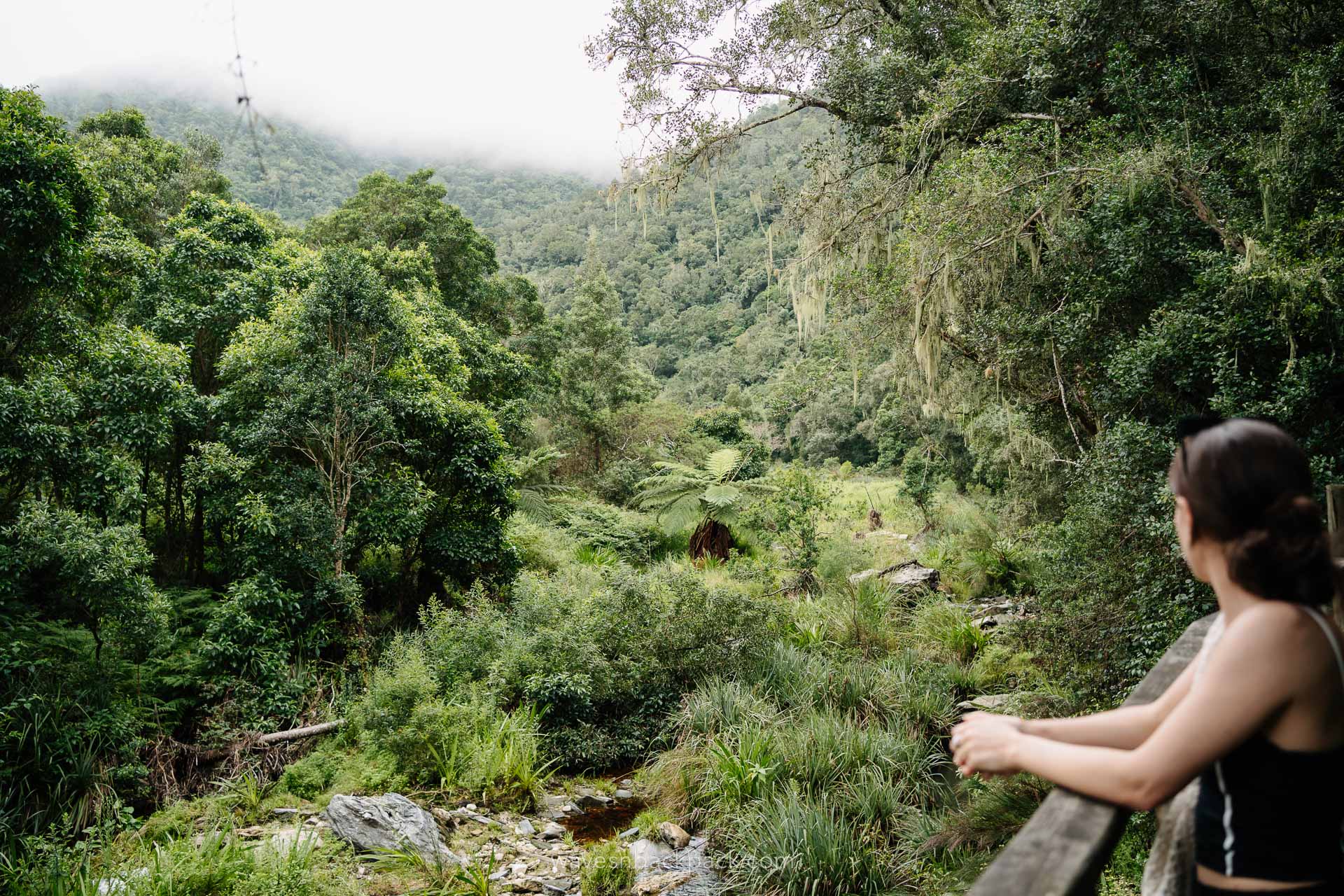
The wine region around Stellenbosch also shows itself from its most beautiful and lush green side during this time!
Best Time for Safaris
Safaris are possible all year round, but they are unbeatable during the dry winter months from May to September.
Less water means that elephants, lions, and other wildlife gather more frequently at waterholes – offering the best chances to see many animals.
Additionally, there are fewer mosquitoes during this time, and temperatures for long game drives are not too hot.
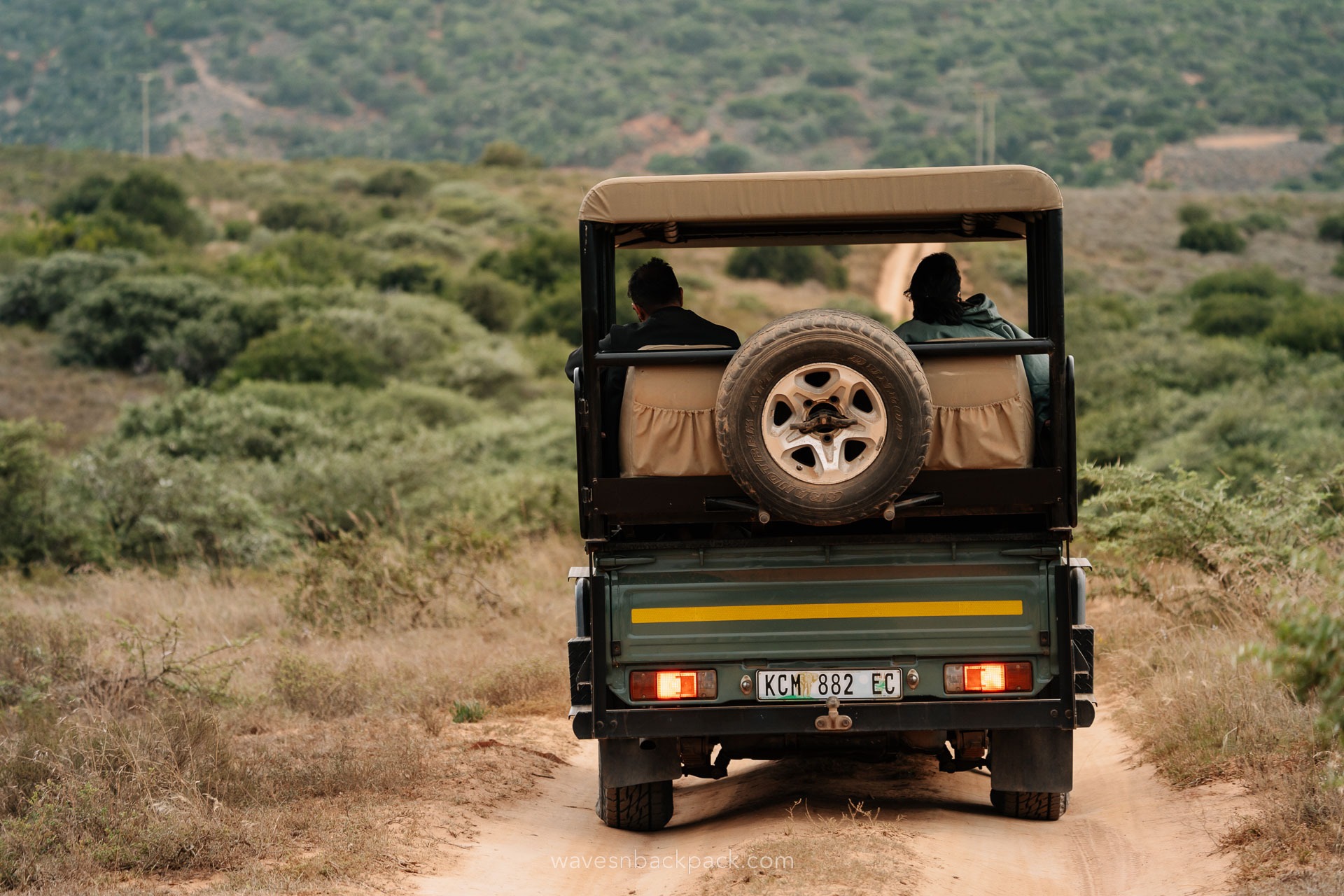
That being said, we went on safari in February and March – which is late summer in South Africa – and saw plenty of wildlife!
Best Time for a Road Trip
If you want to combine beach, nature, and safari during your South Africa Garden Route trip, we recommend the South African spring (September to November) or late summer/autumn (late February/March to April).
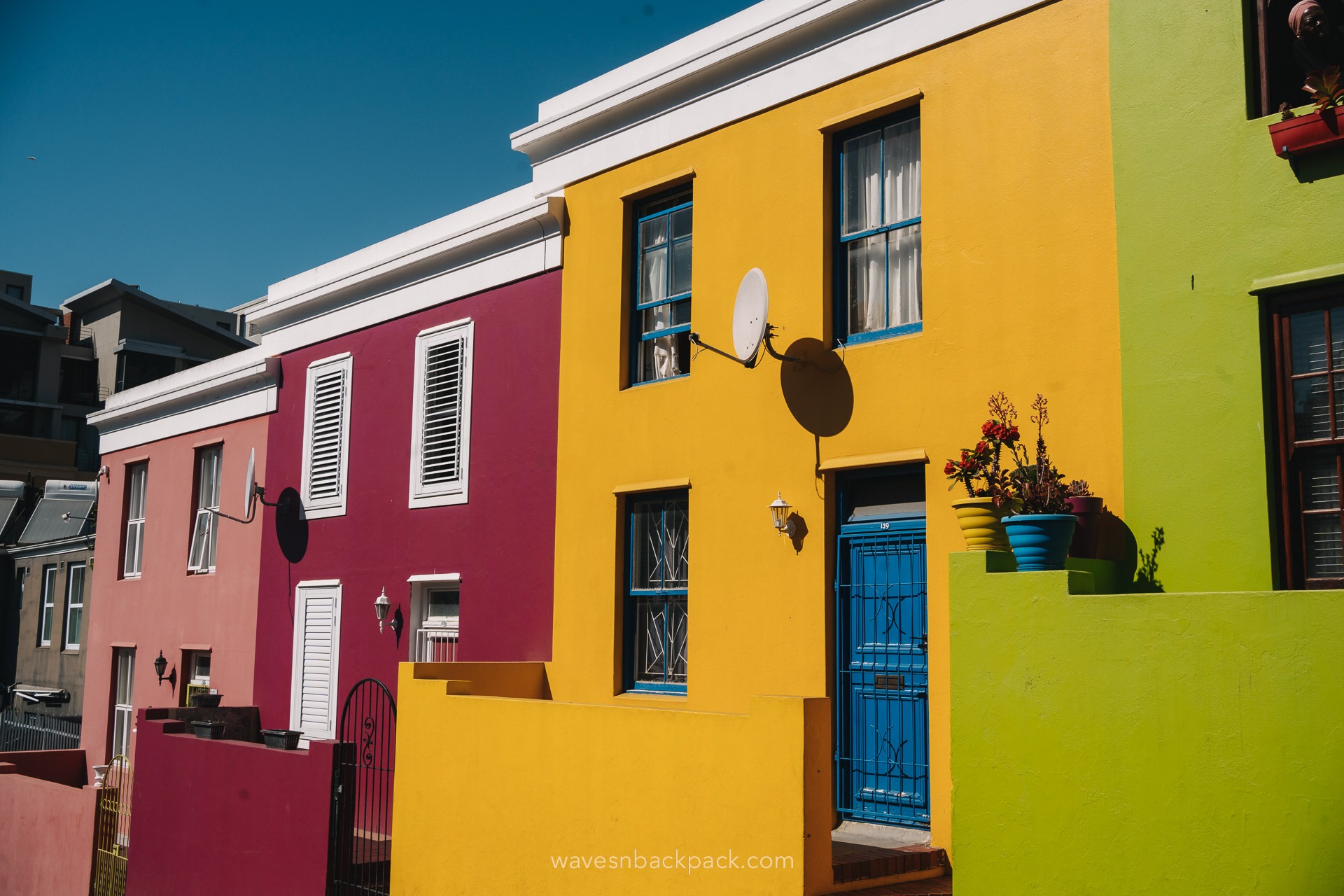
We traveled from late February to mid-March and were super happy with our decision: We had beautiful warm beach days, only one short rain shower, and the weather was not too hot for hikes and safaris. Most importantly, we avoided the peak summer season in January and February, when South Africa sees a high influx of tourists and many locals are on vacation.
Flights to South Africa
International flights usually land in Cape Town or Johannesburg. We recommend starting the classic Garden Route trip from Cape Town.
Many direct flights (including overnight flights) depart from Europe to Johannesburg and Cape Town – for example, from Frankfurt, Munich, or Zurich. The flight time is about 11 to 12 hours.
Alternatively, you can fly with a stopover in Dubai, Doha, or Istanbul, which is often cheaper. We had a stopover in Ethiopia with South African Airways, but we didn’t find the journey very comfortable and would choose a different airline next time. (Our cost: 800 EUR per person for a round-trip ticket.)
For entry, German, Austrian, and Swiss citizens do not need a visa for stays of up to 90 days – a valid passport is sufficient.
Find your Flight to South Africa here
Safety in South Africa
South Africa is often considered a less safe travel destination due to its relatively high crime rate. The main reasons for this include social inequality, crime in major cities, carjacking (vehicle thefts or robberies at traffic lights), fraud, and gang-related crime.
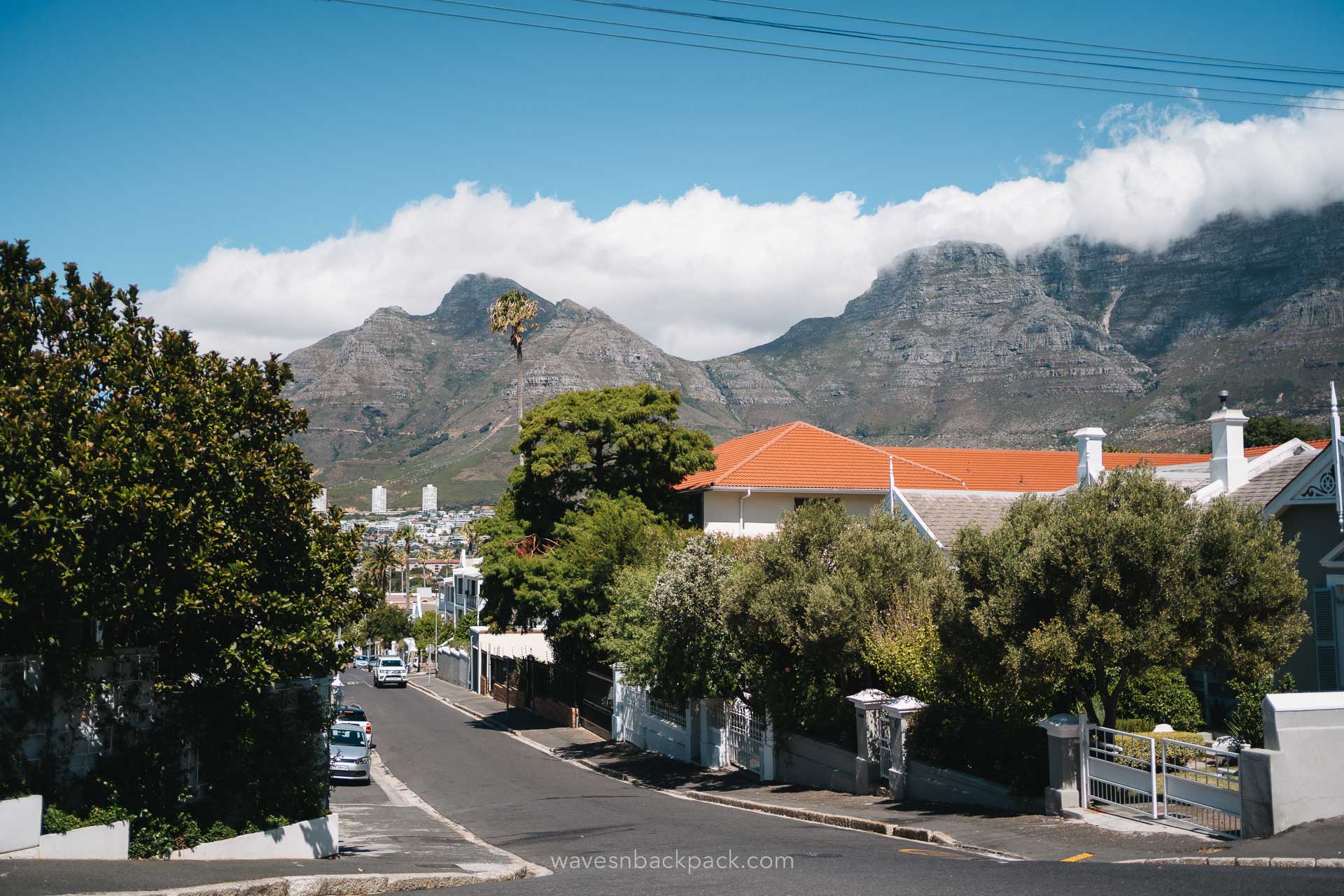
However, this doesn’t mean that South Africa isn’t a fantastic place to visit – rather, it just means you should travel attentively and use common sense.
Here are our tips:
- At night: Don’t walk alone in unfamiliar areas after dark – always take an Uber.
- Valuables: Avoid carrying valuables in a visible way and keep your bag close to you in crowded areas.
- Rental car: Perfect for road trips, but avoid driving at night and always stay aware of your surroundings. Also, never leave valuables or any belongings visible in the car.
- National parks & nature reserves: There have been occasional incidents of robberies here, so it’s best not to explore alone.
- Money & cards: Withdraw cash only in safe places (e.g., ATMs inside shopping malls).
- Emergency numbers: Save important numbers for emergencies, such as the police (10111) or general emergency services (112).
All in all, we only felt uncomfortable once – and that was actually our own fault because we didn’t follow one of the tips above. We were out for pizza and didn’t see the need to take an Uber for the 400m walk in Sea Point, Cape Town.

And, well, while walking with a pizza box in hand, we encountered several homeless individuals. At one point, it became a bit overwhelming, so we decided to step into a small shop.
Looking back, we realized it probably would have felt completely different during the day. Plus, at that time, load shedding (planned power outages to prevent grid overload) was happening, meaning there was no street lighting, which made the situation feel even more uncomfortable.
We learned our lesson and didn’t walk anywhere at night after that.
And as long as you follow these precautions, nothing stands in the way of a relaxed and enjoyable trip through South Africa.
Getting around in South Africa
In our opinion, a rental car is the best way to explore the Garden Route: It gives you flexibility and independence.
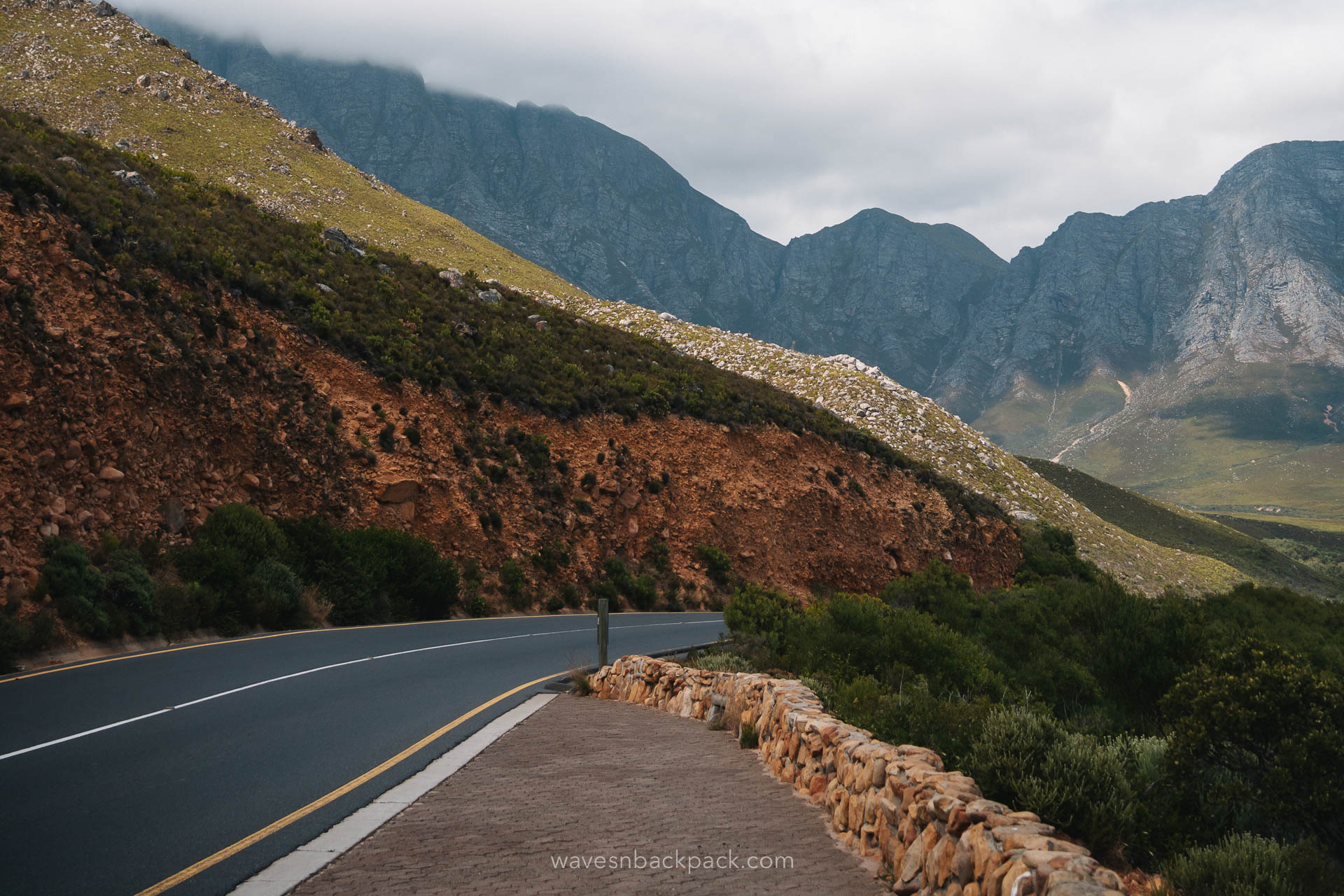
If, like us, you’re planning to start the Garden Route from Cape Town, we highly recommend driving from Cape Town to Port Elizabeth, returning the rental car there, and then flying back to Cape Town. This saves you time, and the flight from Port Elizabeth is usually not much more expensive than the fuel you’d spend driving back.
Alternatively, there are buses (e.g., Baz Bus) or private shuttles. Baz Bus is a hop-on-hop-off bus service for travelers along the Garden Route, stopping at hostels in places like Mossel Bay, Wilderness, Knysna, and Plettenberg Bay.
Costs in South Africa
Traveling through South Africa can be more affordable than you might think. The official currency is the South African Rand, and 1 USD is approximately 18 Rand.
One of the most noticeable things is that dining out at restaurants is quite inexpensive, and the quality of the food is unbeatable. It’s hardly worth buying groceries and cooking yourself.

Accommodation in South Africa
- Budget hostels: 20-40 EUR per night
- Hotels: 50-200 EUR per night
Transport in South Africa
- Bus: approx. 10-40 EUR for longer trips
- Rental car: approx. 20-40 EUR per day
Activities in South Africa:
- National park entry: 10-40 EUR
- Safari guided tour: 55 EUR per person
- Wine tasting: 6-10 EUR
- Surf session (guided + board): 20 EUR
Food in South Africa
- Restaurants: 7-40 EUR
SIM card in South Africa
- 15 EUR (eSIM via Airalo: 5 GB)
Our Favorite Accommodations Along the Garden Route
- Hermanus | Stanford: Rivergate Guest Farm
- J-Bay: Shaloha Guesthouse on Supertubes
- Amakhala Game Reserve: Induli Game Lodge
Have you been to a South Africa Garden Route trip and had a similar experience? Let us know in the comments. <3
_____________
This blog post was created in collaboration with Induli Game Lodge (Amakhala Game Reserve) and Kurland Park Horse Trails (Plettenberg Bay). However, all of our experiences, tips, and recommendations are based solely on our honest opinions and personal adventures. We only share what we genuinely recommend – regardless of any partnerships.
This post also contains affiliate links. That means we may earn a small commission if you book through one of these links – at no extra cost to you, of course.
_____________
More Wanderlust?
➳ South Africa wasn’t enough? How about heading into the desert in Morocco – or spending a week in Marrakesh?
➳ Thinking about Central America instead? Off to Costa Rica!

